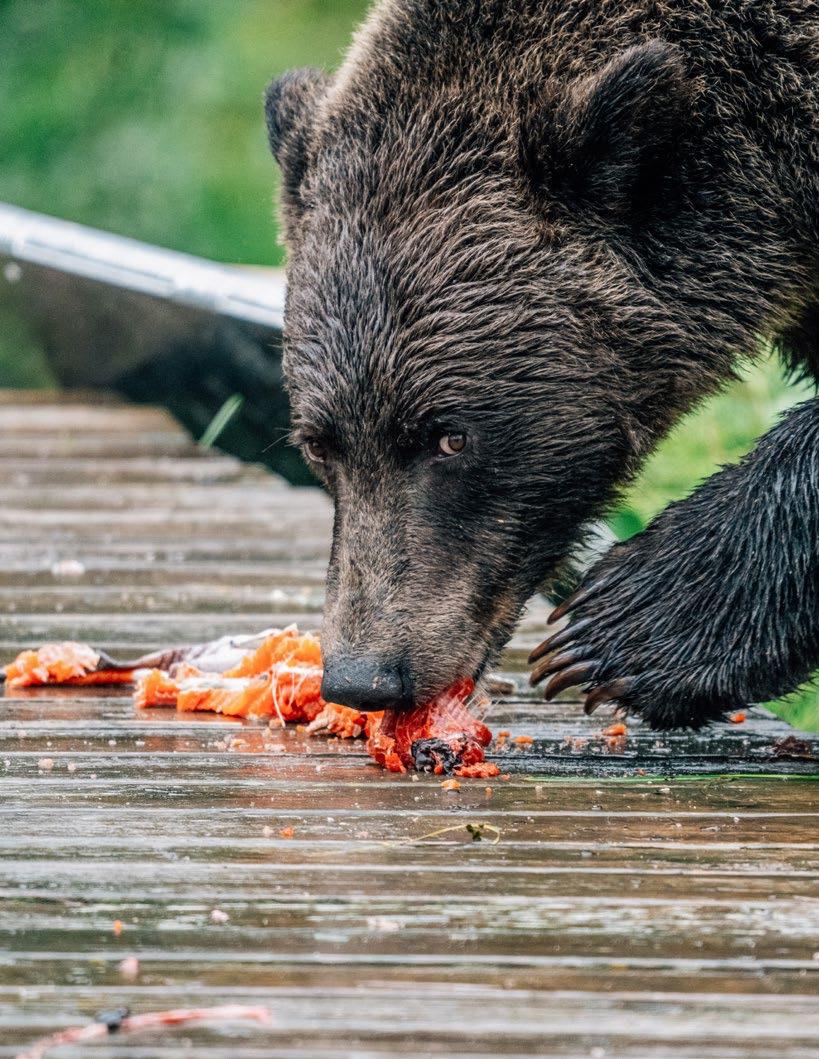Fish & Wildlife








PREAMBLE
WHEREAS the Tahltan Nation has inhabited and harvested resources throughout its traditional territory in the upper Stikine River region of British Columbia and Yukon (“Tahltan Territory”) since time immemorial, pursuant to which the Tahltan Nation possesses Aboriginal rights, including Aboriginal title to, and Aboriginal rights to hunt throughout, Tahltan Territory (“Tahltan Rights”);

AND WHEREAS the Tahltan Rights to hunt within Tahltan Territory encompass both the right to hunt for food, social and ceremonial purposes as well as the right to hunt predatory species for resource management purposes, as both of these hunting practices were integral to the distinctive culture of Tahltan Nation’s pre-contact society;
AND WHEREAS the Tahltan Rights to hunt for food, social and ceremonial purposes, as well as for resource management purposes, are not species-specific, as the Tahltan Nation’s consumption and conservation practices necessarily adapted in response to changes within Tahltan Territory;
AND WHEREAS Tahltan Rights held by the Tahltan Nation, including Tahltan title and rights to hunt, are collective rights that belong to the Tahltan Nation as a whole;
AND WHEREAS the Tahltan Nation has inherent jurisdiction and authority over the lands, resources and interests in Tahltan Territory, which includes jurisdiction and authority over the manner in which its collective title and rights to hunt may be exercised;
AND WHEREAS Section 35 of the Constitution Act, 1982 recognizes and affirms the existing Aboriginal and treaty rights of the Aboriginal peoples of Canada, including the inherent right to self-governance;
AND WHEREAS the Supreme Court of Canada has recognized that Aboriginal rights, including Tahltan Rights, are not frozen in time and are capable of evolving from pre-contact practices, customs and traditions, both in terms of methods of harvest and species harvested;
AND WHEREAS on November 28, 2019, the Province of British Columbia (the “Province”) passed the Declaration on the Rights of Indigenous Peoples Act, which mandates that the Province bring its laws into harmony with the United Nations Declaration on the Rights of Indigenous Peoples, including the following rights belonging to Tahltan Nation:
• to autonomy or self-government in matters relating to Tahltan Nation internal and local affairs, as well as ways and means for financing their autonomous functions (Article 4);
• to practice and revitalize Tahltan Nation cultural traditions and customs, including the right to maintain, protect and develop the past, present and future manifestations of Tahltan cultures (Article 11);
• to determine and develop priorities and strategies for exercising Tahltan Nation’s right to development, which includes the right to be actively involved in developing and determining economic and social programs affecting Tahltan members and, as far as possible, to administer such programs through Tahltan institutions (Article 23);
• to maintain and strengthen Tahltan Nation’s distinctive spiritual relationship with their traditionally owned or otherwise occupied and used lands, territories, and resources and to uphold their responsibilities to future generations in this regard (Article 25);
• to the lands, territories and resources that the Tahltan Nation has traditionally owned, occupied or otherwise used or acquired, including the right to use, develop and control those lands, territories and resources (Article 26);
• to the conservation and protection of the environment and the productive capacity of Tahltan Nation lands and resources (Article 29);
• to determine and develop priorities and strategies for the development or use of their lands or territories and other resources (Article 32); and

• to promote, develop and maintain Tahltan Nation institutional structures and distinctive customs, spirituality, traditions, procedures, practices (Article 34);
AND WHEREAS effective April 1, 2018 the Province amended the regulations of the Wildlife Act in a manner that prohibits hunting of grizzly bear (the “Grizzly Ban”);
AND WHEREAS the Province has confirmed that such Grizzly Ban does not apply to the exercise of Aboriginal rights to hunt grizzly bear for food, social, or ceremonial purposes;
AND WHEREAS due to the combined effect of unauthorized settler development and industrial activity within Tahltan Territory and the Province’s wildlife management laws and regulations, including the Grizzly Ban, predatory species are proliferating within Tahltan Territory and threatening Tahltan Nation’s access to traditional food sources, ability to meaningfully exercise the right to hunt for food, social and ceremonial purposes, and the safety of its community;
AND WHEREAS Tahltan Nation, through Tahltan Central Government (“TCG”), is committed to protecting its practices, culture, community, and economic prosperity, while safeguarding Tahltan Territory and the resources located thereon for the use and benefit of present and future Tahltan members;
AND WHEREAS it is in the interests of the Tahltan Nation to enact a policy addressing the exercise of Tahltan Rights to hunt grizzly bear and other predatory species within Tahltan Territory by Tahltan members for food, social and ceremonial purposes and for resource management purposes;
NOW THEREFORE the Tahltan Nation hereby enacts the following Tahltan Hunting of Predatory Species Policy
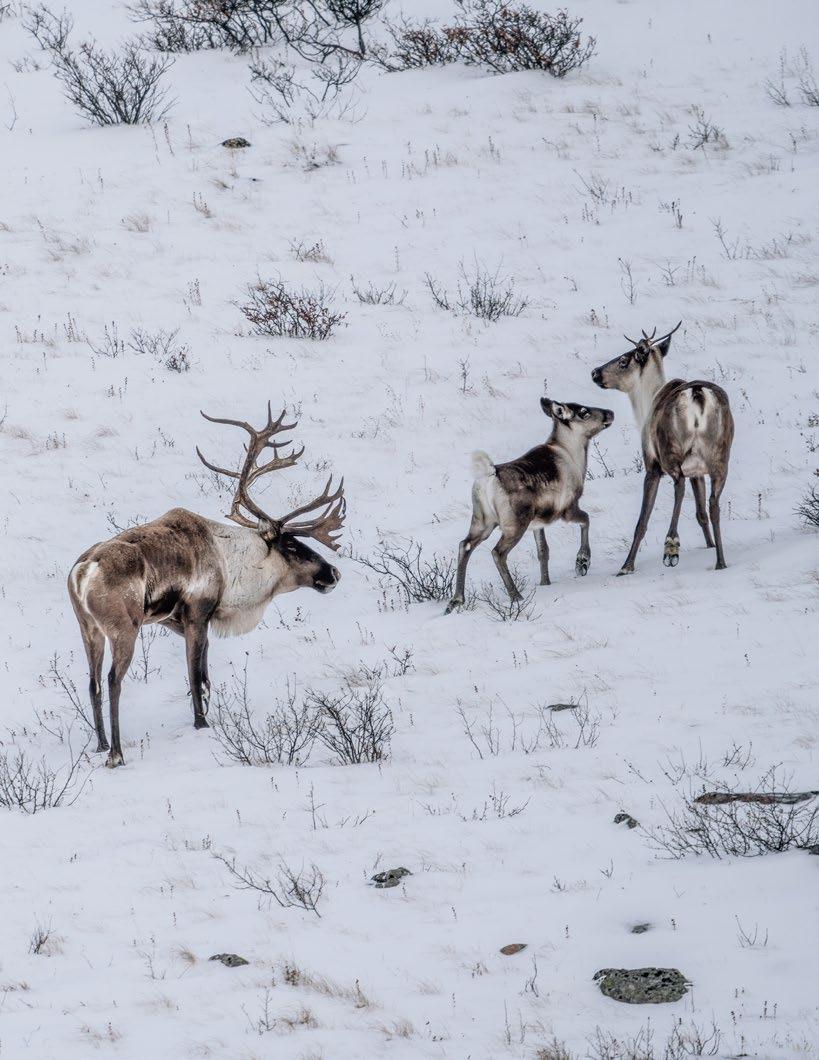 TAHLTAN CENTRAL GOVERNMENT
TAHLTAN CENTRAL GOVERNMENT
Tahltans have practiced predator and wildlife management on their lands since time immemorial. In recent years, Tahltans and non-Tahltans alike have witnessed in the territory a steady decline in ungulate species, and a growing imbalance of other wildlife populations.
Though predator and wildlife management has long been regulated by the federal and B.C. government, the Tahltan Central Government (TCG) is interested in revitalizing its role as a wildlife manager and exploring ways to enhance species protection and regulations within its territory.
The TCG is already engaged in several projects to realize this goal, which include introducing Tahltan predator management policies and designing the Wildlife Guardian program. As these efforts are underway, a higher-level approach is also necessary. The TCG is now exploring ways to become more deeply involved in designing governance arrangements and decision-making processes for managing wildlife in conjunction with efforts led by the federal or provincial governments.
To explore these options, TCG has retained Tollefson Law, which is conducting a review of wildlife management models across Canada and around the world to determine best practices. They will also make recommendations on possible wildlife co-management and shared decision-making models that are responsive to the challenges that the Tahltan Nation faces.
Chris Tollefson and Anthony Ho, lawyers at Tollefson Law, have provided services to the TCG in past projects, including written and oral submissions to the federal government on a range of environmental and natural resource law reform. In 2016, Chris and Anthony appeared alongside Tahltan Heritage Resources Environmental Assessment Team (THREAT) Project Manager Nalaine Morin and President Chad Norman Day before the federal government’s Expert Panel on the Review of Environmental Assessment Processes to make submissions on behalf of the TCG.
Since April 2021, Tollefson Law has not only been researching various resource management regimes but also conducted interviews with several Tahltan community members who possess deep knowledge of the predator and other wildlife management issues on the land. The team of lawyers has also interviewed practitioners and scholars of wildlife management across Canada and the world.

Based on their preliminary findings, there are models in Canada that serve as effective and useful examples on which to base a Tahltan wildlife management regime. Across over thirty models studied, there is a wealth of lessons that can be drawn from wildlife management regimes that can help the TCG build a wildlife management system that is science-based and world-leading in its design and governance.
These findings will help the Tahltans revitalize wildlife management on their lands now, and into the future.

Welcome to our second annual Tahltan Central Government (TCG) Fish & Wildlife Newsletter. I am extremely proud to share that in September, our first annual Fish & Wildlife Newsletter was recognized by the Canadian Public Relations Society (CPRS) and their National Awards of Excellence 2021, winning Silver under the Best Publication Category.
Then in October, we were notified the same Newsletter is a finalist under the External Publication (Print or Online) for a Platinum PR Award, which is an international award hailed as the most coveted and competitive award in the communications space.
This is an accomplishment that all Tahltans can take pride in. I must thank our entire TCG Team, particularly Gordon Infanti, TCG Communications & External Relations Director, for leading this project. The other key staff leaders include TCG’s Multimedia Director Adam Amir, Fisheries Director Cheri Frocklage, Wildlife Director Lance Nagwan, and Communications Specialist Ombrielle Neria for their co-creation and collaboration.
Our Nation continues to be challenged as we navigate through unprecedented times. In this past year, COVID-19 has impacted our homeland and communities more than ever, as well as many Tahltan families living elsewhere. This has meant we have had to sacrifice and step up to support each other, our families, and our communities. It has not been easy, but we are in this together. Thank you to our Emergency Management Committee (EMC) in all our communities, our members, and teams working in the background every day to keep our people safe.
When I started as the President of the TCG, I possessed little firsthand experience with hunting and fishing and the TCG had no wildlife staff or department in place. This changed when we established the TCG Wildlife Department a few years ago and I began to spend more time in the wilderness throughout Tahltan Territory to hunt, fish and learn about our cultural traditions with our Elders, TCG staff and various wildlife entrepreneurs and professionals. Over the past couple years my children and I have successfully hunted moose for our family and local Elders, we harvested multiple Grizzly Bears in wellestablished ungulate calving grounds, and we were recently successful with our first fall mountain goat hunt outside of Telegraph Creek.
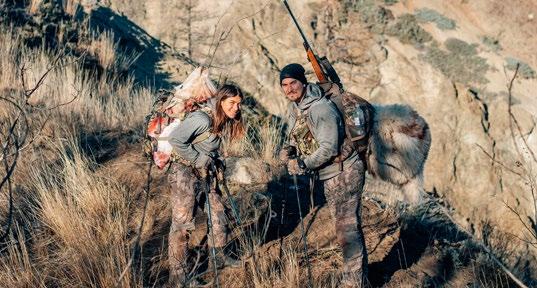 Below: Fall mountain goat hunt outside Telegraph Creek.
Below: Fall mountain goat hunt outside Telegraph Creek.
Each time I have gone out hunting and/or fishing we have ventured into a different area of our Tahltan Territory, which has provided me a more wholistic understanding of our homeland and some of the distinct opportunities, issues, and the cultural/ historical significance of each area. In addition, these adventures have allowed me to spend quality time and build strong relationships with many of our Wildlife Guardians and other TCG staff, which has otherwise been challenging during the pandemic. As Tahltan people, no matter where we live or how we grew up, it is never too late to return to our homeland and learn our culture. Indeed, the time I have spent out on the land has kept me grounded and helped me improve as a Leader, Father and as a Tahltan.
From birth, Tahltans are taught that our homeland is ours – Tahltan Territory was never surrendered to anyone, and our ancestors fought, shed blood and died so future generations of Tahltans had lands, healthy ecosystems and resources that would allow us to thrive. We have a responsibility to honour our ancestors by stewarding our land properly, which includes managing wildlife and fisheries in a good way that will allow our Tahltan rights and title to be inherited by future generations. This newsletter is designed to inform Tahltans of the ongoing activities of TCG’s Fisheries Department and Wildlife Department, and to celebrate their ongoing hard work, success, and growth.

Since joining the TCG last year, the Fisheries Department has been evolving and taking on more projects than ever. The Fisheries staff is an amazing group of individuals who work diligently through the season, often in isolated locations away from our Tahltan communities and the public. I look forward to getting to know them better, hopefully next year in the field if COVID-19 restrictions allow this to happen. I have been thoroughly impressed with the leadership and collaborative approach displayed by Cheri Frocklage and Kerry Carlick since the Fisheries Department officially joined the TCG and appreciate their thorough updates to our Tahltan Nation.
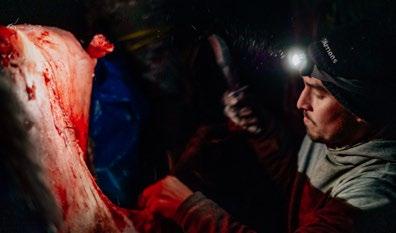 Above: Skinning the mountain goat and cleaning it's hide.
Above: Skinning the mountain goat and cleaning it's hide.
After a contentious hunting season last year, the TCG Wildlife Department has remained steadfast with their advocation for better wildlife management through working alongside the Province and continuing to gather important data and information on multiple species throughout Tahltan Territory. The collaborative efforts with the 3Nations (Tahltan, Kaska, Tlingit) are ongoing and we are always advocating for additional funds and collaborative initiatives with the Province to create additional growth and success in our territories.
This year we successfully had more joint patrols with Tahltan Guardians and BC Conservation Officers, which improves accountability measures and safety throughout the hunting season. As data continues to showcase a decline in caribou populations and some moose populations, the Wildlife Department continues to implement the Tahltan Predator Management Policy and the TCG continues to encourage Tahltan members to harvest predators, particularly in key ungulate calving areas.
The policy encourages and incentivizes Tahltan members to exercise their constitutionally protected Aboriginal hunting rights to harvest predatory species, including black bears, grizzly bears, and wolves.

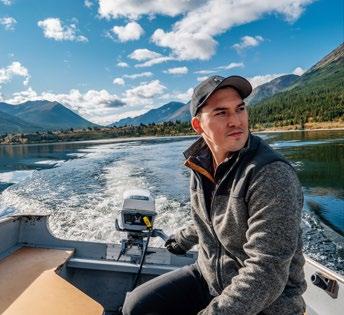
Declining fish stocks have meant that Tahltans have been encouraged to conserve Chinook, also known as our King Salmon. The same can also be said about our dwindling Caribou populations, so we are encouraging Tahltans to hunt other ungulates for their food sources instead. The TCG is responsible for advocating for our fish and wildlife, and we as Tahltan individuals must collectively also do our part to remain informed and work together to manage our wildlife effectively. It is our right to harvest, but our obligation is to protect our fish and wildlife populations when they reach a certain point of vulnerability. Please understand that our Chinook and Caribou populations need our help more than ever right now.
Through the Tahltan Stewardship Initiative (TSI) much work is being done to support our Nation to fulfill its inherent stewardship responsibilities for all lands, water, wildlife, fish, and natural resources. The TSI is an opportunity for transformative change based on the recognition of Tahltan Rights and Title. It includes work involving the Communications & External Relations, Culture & Heritage, Fisheries, Lands and Wildlife Departments. TSI has a team of leaders, negotiators, experts, and legal counsel working together to achieve our goals. I encourage Tahltans to get involved in this important work. We will be launching a new TSI website for members to learn about this work and participate.
Our policy is intended to help stabilize wildlife populations, protect local communities, encourage culturally important Tahltan practices, and to set a strong foundation for future wildlife management practices and initiatives.
Connected to the TSI, the TCG is actively meeting with the Province of British Columbia to discuss and work to agreeable solutions on many of the issues impacting our homeland. I was very clear and assertive with the Province on many occasions when I have said, “There will be no world class mining jurisdiction in Tahltan Territory unless we can ensure we also have world class wildlife and fisheries management.” We are working to build the foundation of a new, enduring, resilient government-to-government relationship. One transformed, based on truth, best practices and recognition of Tahltan Rights and Title.
In closing, I want to emphasize and reiterate how grateful the TCG Team and Tahltan people are for the hard work and sacrifices of the Fisheries Department and Wildlife Department. Their hard work, long days in the wilderness, and ongoing growth and success is inspiring on so many different levels. Our TCG team is honoured to keep advocating for them, both internally and externally, so we can continue to build capacity, fund new initiatives and collectively ensure we have healthy and stable fish and wildlife populations for our Tahltan people for generations to come.
“The TCG is responsible for advocating for our fish and wildlife, and we as Tahltan individuals must collectively also do our part to remain informed and work together to manage our wildlife effectively.
It is our right to harvest, but our obligation is to protect our fish and wildlife populations when they reach a certain point of vulnerability.
Please understand that our Chinook and Caribou populations need our help more than ever right now.”
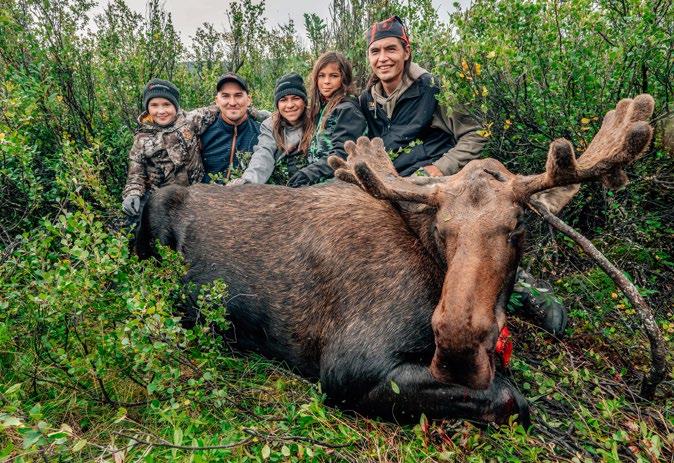 Klane Nedischā.
Klane Nedischā.

As the 2021 field season nears closure, I reflect on the volume of work done and the amazing people involved in the management of our Stikine River salmon resources. Our staff often spend extended periods of time in remote camp settings, braving unfavorable weather and high-water conditions, blood sucking insects by the score, grizzly and wildlife encounters, long days counting during the peaks, and long days waiting for the arrival of the stocks.
These men and women are the backbone of our department, bringing their unique individual strengths, knowledge, and technical expertise to their respective posts. It is not easy to shift into the mindset and embrace living in an isolated setting away from family and loved ones for the summer months. I commend them all for their continued dedication and commitment.

I extend heartfelt praise and a grateful Mēduh to our Hydrologist, Patrick Hudson, and our Science Advisor, Richard Erhardt, for your ongoing mentorship, guidance, and support to our projects and at our various boardroom tables. It is with their assistance and sharing of their knowledge that we have expanded our scope of work and are increasing the capacity of new and long-term staff.
My sincere thanks to our Fisheries Manager, Kerry Carlick, who took on the responsibility and role of overseeing staff training and field scheduling this year. We went from approximately 12 projects to an astounding 26 field projects in 2021. With the increased volume of work, juggling project planning, operational plans, staff travel, flight and field logistics, and day-to-day operations, Kerry met these challenges head on and applied his incredible leadership qualities to ensure a successful field season.
Much to our dismay, COVID-19 persists. As a result, we remained in a modified approach to field project delivery to ensure the health and safety of our staff members.
In addition, my duties did not include overseeing the staffing and field logistics. I did provide support to the field staff and planning in the early onset of the field season before Kerry was able to travel north to kick off the local projects in Telegraph Creek. Once he was stationed in Dease Lake, my involvement became minimal in this regard.
Mēduh chō Kerry. I am so happy that he has moved to Dease Lake. Having Kerry located in the territory is key to ensure the success and effective field logistics planning and day to day operations throughout the extended field season. Welcome to Dease Lake my friend, see you out on the Land.
As for myself, 2021 has been a very busy year. It is challenging me on levels that I could have never dreamed. Growing pains, I suppose. This marks the first year that I did not participate in spring training with my staff. This is usually a time for annual team building and bonding. I must admit that I felt a deep sense of remorse and loss. I compare it to being a parent, so proud to nurture and watch them grow and progress, all the while knowing that they are coming into realizing their full potential and relying less on me for leadership. Bittersweet and ever so rewarding.
My new role and responsibilities as the Fisheries Director have made it necessary to focus my attention and time on the larger Tahltan Central Government (TCG) initiatives that are currently in the works. I feel very fortunate to be involved and contributing at this level. I am grateful for these new opportunities and networking with so many talented and knowledgeable individuals, both within and outside of the organization. They bring their experiences, passion for the land and resources to the table. It continues to be a steep learning curve for me and allows for my own personal growth, learning, discussion, and understanding of the issues.
At times, the number of meetings and engagements are overwhelming. This is the nature of the beast and how ideas come to fruition. It does not happen overnight. Often, it takes weeks, months, and sometimes years of discussions, investigations, conceptual development, and the consistent hard work and dedication of the team to reach the destination. I am both proud and excited to be part of such a team with the TCG.
 Left: Me with a beauty RBT caught feeding on the Sockeye salmon spawning grounds.
Opposite: TCG Fisheries staff surveying and DNA sampling Chinook.
Left: Me with a beauty RBT caught feeding on the Sockeye salmon spawning grounds.
Opposite: TCG Fisheries staff surveying and DNA sampling Chinook.
Kerry’s diligence in keeping up with the local Emergency Management Committee (EMC) COVID-19 protocols, in addition to his hands on involvement with the emergency orders caused by the spring washouts, and the perpetual Highway 51 road construction, enabled the safe and efficient delivery of local projects.

What a year 2021 was for the Fisheries Department! It was a whirlwind of a season and our most active one to date with a total of 26 projects. This was the busiest that I have been as a manager.
I have taken on a lot more responsibility with staffing, logistics, project planning, budgeting, payroll and other tasks. It is all worth it to see the growth within our team.
This year I will share two of my proudest accomplishments:
1. Facilitating eleven staff receiving a professional Biological Technician designation upon their successful completion of a ten-day course through Natural Resources Training Group. This training, combined with all their traditional knowledge and experience, will make our department even more successful out in the field and wherever they may conduct their work.
2. Starting of the Steelhead Study. Ever since starting as the Fisheries Manager in 2017, I wanted to know more about the Steelhead in the Tahltan River as so little was known about them. In talking with Pete Etherton, a biologist and retired Department of Fisheries and Oceans Canada (DFO) Manager, he shared the same interest. So, through those conversations, we came up with a plan to do a Steelhead Study. To see it starting to take shape is amazing.
Since joining the Tahltan Central Government (TCG), the Fisheries Department has seen a lot of growth and the development of many cool projects and initiatives that will show benefits to our fisheries resources.

There is still so much more that we want to do. Through adding to our team, we will increase the capacity needed to grow, taking more of a management role in our fisheries resources.
It is awesome to see our department evolve from just working alongside DFO on long-term projects, to doing more of our own work with other species, such as Steelhead for instance, and more of our own habitat projects on other river systems.
The use of new technology, such as drones and sonar equipment in our work adds to excitement for the future with our growing fisheries team.
 Opposite + Right: Kerry Carlick and Kyle Inkster collecting Chinook DNA samples, July 31.
Opposite + Right: Kerry Carlick and Kyle Inkster collecting Chinook DNA samples, July 31.

The 2021 Fall hunting season is over. Hopefully you were lucky enough to fill your freezer with fat meat. The Tahltan Central Government (TCG) Wildlife Department has been working extremely hard to increase opportunities for all community members to successfully harvest an animal to meet their family’s needs. Ongoing work is being done behind the scenes with the Province of British Columbia to accomplish year one goals set under the Tahltan/BC Wildlife Accord.

One notable highlighted success under the Wildlife Accord this year was the commitment of increased BC Provincial Conservation Officer enforcement on the landscape. The collaborative effort had the TCG Guardians assisting Conservation Officers in enforcement patrols and hunter tag compliance and monitoring.
Thank you to all Tahltan members for your continuous support, conservation efforts and participation in all forms of management throughout the year.
Last year in 2020, the TCG Wildlife Department and Guardians’ trapping efforts for wolves was directed to reduce the pressure on moose populations in and around the communities of Dease Lake, Iskut and Telegraph Creek. Guardians were able to remove twelve wolves by trapping methods and deployed fourteen GPS Collars throughout the territory. TCG Wildlife Department wolf collar information collected over the past year guided our decision to focus on Boreal mountain caribou wintering areas within Tahltan Territory.
The TCG trapping program is ongoing. A lot of time and effort has been invested. The desired effect is to reduce harvest levels of large packs which specifically target and specialize in killing caribou.

A request from Tahltan members to increase the Wolf Harvest Incentive from $500 to $1,000 has been approved and will be implemented as of November 1, 2021.
TCG Guardians will work closely with local community members who are actively trapping or have a willingness to learn to target wolves in Tahltan Territory. For additional information, please contact the TCG Wildlife Department for additional updates on techniques along with recommendations on equipment that we have field tested.
Tahltan Nation harvest numbers are not known for the territory. Guardians will begin contacting members both in person and by phone and requesting harvest information. Harvest surveys are conducted on a voluntary basis.
• Accuracy of information is critical to inform next year’s Resident Hunter Allocation of hunting tags sold for specific regions of Tahltan Territory.
• This is the initial year of the Tahltan membership harvest data collection program. The same information will be collected from members every year moving forward.
• Wildlife Department Calendars will be issued to Tahltan Harvesters to track their harvest and any additional data you feel is worth mentioning or want to know more about.
• Our future plans include the development of a TCG Wildlife app to assist tracking data and information digitally.

Since joining the Tahltan Central Government (TCG) in May, I have received a lot of support from the wildlife team and have been getting settled into my new role. As the Wildlife Guardian Coordinator, I have been busy organizing and participating in the Guardians’ activities.
Westin Creyke Wildlife Guardian CoordinatorThroughout the field season, our Guardians have been involved in multiple projects with the provincial government. We have worked with provincial foresters on the Forest and Range Evaluation Program (FREP) to monitor and sustainably manage our timber resources. Additionally, we have partnered with provincial ecologists to carry out Biogeoclimatic Ecosystem Classification (BEC) sampling. This BEC sampling is the start of mapping wildlife habitat quality within our territory. Furthermore, we have worked with the Province to carry out the Canadian Aquatic Biomonitoring Network program within our territory. This program allows for us to develop a reference of healthy stream biological communities and use that to monitor stream disturbances. Finally, our territory experienced an unprecedented presence of BC Conservation Officers with three to five officers posted in Dease Lake during the hunting season with whom we regularly partnered with for patrols. The Guardians’ knowledge of the area was crucial in finding resident hunter infractions in our area.
We have also performed various projects of our own. Guardians routinely patrolled the territory and we assisted the Fisheries Department with beaver management near Tahltan Lake. The Caribou and Wolf Collaring Program has continued with monitoring ongoing. We are looking forward to deploying more caribou collars this fall. The Predator Management Program continues. I would like to remind everybody to respect the bears by utilizing the meat from your harvest.
To close, I would like to encourage everybody to do their part for the conservation of our wildlife and help ensure that it can be enjoyed by future generations.


November 16, 2021
Today, the Tahltan Central Government (TCG) Communications Department received honourable mention for two Platinum PR Awards in the External Publication (Print or Online) category for their 2020 Fish & Wildlife Newsletter and for the TCG’s new brand under the Re-Branding and Re-Positioning category.
These International Awards have been hailed as the most coveted and competitive award in the communications space. Those acknowledged in this world-renowned recognition program represent the best of the best –those who have reached the pinnacle of innovation and industry knowledge. Other notable finalists this year included Amazon, Bank of America, LinkedIn, Volkswagen, Alibaba, T-Mobile, Canadian Tire, Cirque du Soleil, Walgreens, Pepsi, and Hewlett Packer to name a few.
The TCG continues to innovate in new and exciting ways for the Tahltan people as it advocates for the protection of the Nation’s culture and identity, sovereignty, rights and equality in the Province of British Columbia, Canada, and the world. By having world class communications, the Nation’s voice is being heard loud and clear.

Congratulations to the Nation, to Gordon Infanti, TCG Communications Director, members of his department and everyone else that has contributed to these projects.
Earlier this year, the TCG Communications Department won two national awards from the Canadian Public Relations Society (CPRS) and their National Awards of Excellence 2021. TCG was awarded Gold under the Brand Development Campaign of the Year category and Silver under the Best Publication category for the TCG 2020 Fish & Wildlife Newsletter.
The TCG was also announced winner of an IABC Silver Leaf Award for its new TCG Brand Identity, receiving a National Award of Excellence in the Communication Management division.
President Chad Norman Day
TCG 2020 Fish & Wildlife Newsletter
To check out last year's Award-winning Fish & Wildlife Newsletter, visit: tahltan.org/2020-fishwildlife-newsletter
For more information, view the official TCG press release here: tahltan.org/tahltancentral-government-winsnational-internationalcommunications-awards
And the article published in the Toronto Star: thestar.com/news/ canada/2021/09/27/ tahltan-first-nationsrebranding-campaignsnags-national-award
17 – 3Nations & British Columbia (3NBC) Collaborative Stewardship Forum (CSF) Update
19 – Wildlife Projects
– Tahltan Predator Plan
– Cow Moose – Community Signage & Education
– Caribou Population Status
– Caribou October 2021 Survey Numbers
– Moose Population Survey
23 – Klappan Moose Stewardship Plan (MSP)
27 – Jade Boulder Sheep Project
32 – Guardians Training Update

It is increasingly clear that the complex issues we face in natural resource management today cannot be solved through the application of western scientific knowledge alone. Local and Indigenous knowledge and perspectives are essential to build our collective approach to wildlife stewardship in ways that can benefit all.
Members of the 3Nations BC (3NBC) Collaborative Stewardship Forum (CSF) include representatives from Taku River Tlingit (TRT), Tahltan, Kaska, 3Nations Society and the Province of British Columbia. The team recognizes the value that local and Indigenous perspectives bring to wildlife management. We recognize that having access to shared and trusted information gathered from multiple knowledge sources is the foundation for being able to make management decisions together.
Over the last three years, the 3NBC Forum has been working to support each of the 3Nations Guardian Programs to coordinate among each other and build capacity, provide eyes and ears on the ground, and conduct the surveys and research needed to better inform wildlife management. This year, due to the pandemic, the Province has provided bridge funding to allow 3NBC CSF to continue for one more year while a renewed mandate is being sought to continue Collaborative Stewardship Forums like 3NBC for the long term. 3NBC members have participated in the process of developing joint recommendations for a new mandate. Key among those recommendations is the need for long-term sustainable funding and the need to focus on how shared data collected through the forums can be used to inform decisions.
While the work to secure a long-term mandate continues, so does the 3NBC collaborative work on wildlife inventory and assessment needed to inform better management decisions. In addition to the monitoring of licensed hunters and recreational land users, we are conducting wildlife surveys. This fall, Guardians are delivering community surveys to inform the development of community-based moose stewardship plans within the Atlin, Klappan, and Liard Basin moose populations.
Developing and testing methods for gathering and sharing data from all knowledge sources to inform evidence-based decisions that everyone can understand is a primary goal of the moose stewardship planning. This work to gather community knowledge and perspectives is critical to informing better management decisions going forward and is the foundation needed to move toward wildlife co-management.
The moose stewardship planning allows the Province and each of the 3Nations to experiment and learnby-doing. We hope the lessons learned here can be expanded and applied to other wildlife populations across the 3Nation collective territories in an everwidening approach to co-management.
This fall, each of the 3Nations is conducting community surveys through Guardian-led interviews, and online surveys. Participation in the survey is a great way to get involved and contribute to the work of the 3NBC Collaborative Stewardship Forum.

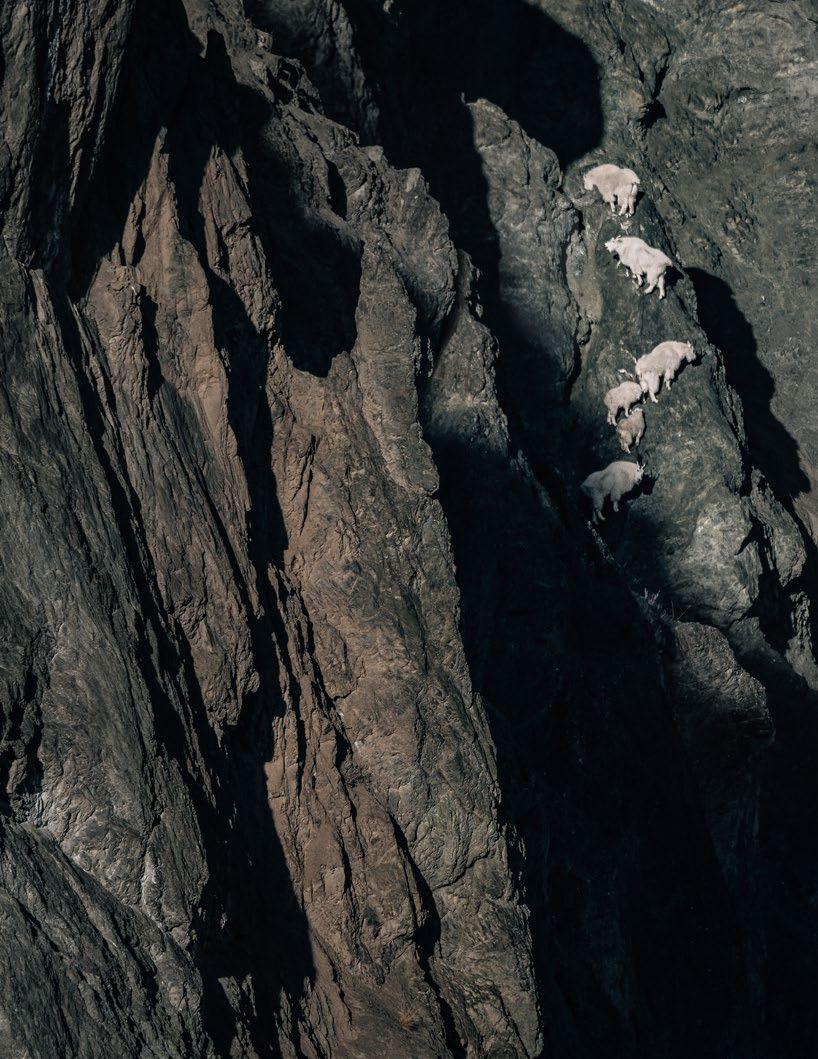


Home Ranges range from several hundred to two thousand km². Additional analysis is required to tease out the pack size information due to some wolves having greater movements than others. Overall density of wolves is like the analysis performed in May where densities are in the 13–24 wolves/1,000 km² range.
Cow Moose
WOLF
>200–2,000 km2
WOLF DENSITY (Range based off May analysis) COLLARING DATA
+2
Collars since late September
5 2--3
⁄ 1,000 km 2 Active Refurbished collars Collar
AVG. DISTANCE TRAVELLED
20 WILDLIFE PROJECTS | TAHLTAN PREDATOR PLAN / COW MOOSE – COMMUNITY SIGNAGE & EDUCATION

1,754 ± 461 km
In Dease Lake to deploy this fall/winter (95% Confidence Interval [CI]).
Healthy Boreal caribou mountain herds require large intact habitats. Identification of sensitive areas and identified protected and future land conservation designation planning efforts will be directed through the Tahltan Stewardship Initiative (TSI) project.

Tahltan Guardians and Ministry of Forests, Lands, Natural Resource Operations and Rural Development (FLNRORD) staff conducted the first round of three Tseneglode Caribou Surveys planned for the upcoming year.
The information will be used to jointly access and determine the current herd status. The data and information will also be monitored to determine the success of the 2021 calving season. The initial population estimate will assist in determining recruitment (birthing) level of the known population. This information also helps our Wildlife Guardians determine areas to focus efforts for the 2022 Tahltan Trapping Program.
See the TSI section starting on page 87 for more information on the project
•

•
: 100 cows 1
±
565 674
The Klappan is a sacred area to the Tahltan with a high density of ancient, traditional, and current dwellings, camps, sites, trails, harvesting, and gathering areas. It is an area important for Tahltan members to meet their cultural and sustenance needs throughout the year.
It is also an area used by licensed hunters, primarily for moose hunting, who in the past have accessed the area via the rail grade traversing the length of the area.

It is an area with a history of conflict over land use practices, uses, overlapping, and at times competing land uses between the Nation and licensed hunters. In addition, there have been concerns on the status of the population with differing views of the moose population numbers in the Klappan.
BC and the Tahltan Central Government (TCG) have worked together on the Klappan and the associated land uses, moose numbers, and hunting issues. In 2018, two Limited Entry Hunting (LEH) seasons were established to address concerns on the sustainability of the moose harvest and to avoid overcrowding by distributing hunters over time and space.
In 2017, the Klappan Management Board, a joint decision-making body of BC and Tahltan representatives was established for the area and in 2018 endorsed the licensed hunting regulation changes for the Klappan.
Tahltan Nation is a member of the 3Nations Society and involved in the 3NBC Collaborative Stewardship Forum (CSF) three-year initiative. Under the 3NBC CSF Initiative, Klappan moose monitoring and stewardship planning is being delivered to support shared moose management for the area.
The Tahltan Wildlife Department acquired funds in 2019 to conduct an early winter moose count in the Klappan, to collect information on the numbers of bulls, cows, and calves just after the hunting season and after rut.
Tahltan Guardians and Wildlife Department conducted the helicopter survey in early December 2019 and observed:
Ȗ 351 moose
BULLS 94 COWS 157
46 + 4
CALVES (Classified) CALVES (Unclassified)
• There were 44 groups of a cow with a calf, and one group of cows with twin calves.
• A bull ratio of 46.5 ± 9.6 (90% confidence interval [CI]) bulls/100 cows was observed with a sample size of 296 and a precision level of 20.5 % (90% CI).
• A calf ratio of 25.2 ± 6.5 (90% CI) calves/100 cows was observed with a sample size of 253 and a precision level of 25.8 % (90% CI).
Another survey occurred in the winter of 2020 flying similar areas in the Klappan; however, due to a freeze/ thaw event in December we were unable to fly and conduct the survey until February 2021. The survey was led by Guardians and Wildlife Department staff.
• A bull ratio of 58.5 ± 15 (90% CI) bulls/100 cows was observed with a sample size of 186 and a precision level of 24.0 % (90% CI).
• A calf ratio of 28.2 ± 9 (90% CI) calves/100 cows was observed with a sample size of 150 and a precision level of 32.4 % (90% CI).
The two surveys are similar in numbers for bulls and calves with results at or below low-density moose population indicators (50 bulls:100 cows; 25 calves:100 cows). The slight difference between years could be related to the 2021 survey occurring later in the winter, where moose begin to group at lower elevations due to snow depth. The move to lower elevations and larger group size could be creating higher bull ratios than just after rut when moose are more dispersed across the larger landscape than late winter.
A population estimate survey is being planned for the winter of 2021-22 which will allow for comparison to the 2019 survey. It will be led by Guardians and Wildlife Department staff.
Additional wildlife viewed in the study area included:
WOODLAND CARIBOU (Rangifer tarandus caribou)
4
MOUNTAIN GOATS (Oreamnos americanus)
2 2
WOLVERINES (Gulo gulo)
17 2 5
STONE’S SHEEP (Ovis dalli stonei) WOLVES (Canis lupus) ELK Cervus elaphus)
All this information will be added to the Tahltan knowledge and local knowledge, to support the Klappan Moose Stewardship Plan, and the Klappan Management Board for further consideration on the LEH hunting seasons and other management items.
The Klappan Moose Stewardship Planning process commenced in 2020 but has been delayed due to the pandemic and COVID-19 restrictions. It is being supported through the 3NBC CSF and is being delivered through the Tahltan BC Fish and Wildlife Working Group. Up to the summer of 2021, most of the work done to date has been focused on compiling available information, developing the planning framework and outline, with more recent activities including:

1. Review of existing information and management plans;
2. Assessing licensed hunter harvest trends; and,
3. Community based surveys to gather community knowledge and perspectives.
The planning process is currently working on the community knowledge gathering stage and will be moving on to the below stages in the winter of 2021:
1. Applying Tahltan, local and scientific knowledge to develop the plan and set the process for shared moose management decision-making;
2. Setting community-based population, habitat, harvest, predator, and land use objectives consistent with provincial and Tahltan moose management requirements;
3. A moose stewardship plan consistent with moose management direction from Tahltan land use plans and conservation initiatives, Klappan Decision-Making and Management Board, and legal higher-level plan objectives; and,
4. Community-based review and approval process for Tahltan.
Further information and draft results from the planning work will be shared in the winter.
 Cow and calf moose feeding, August.
Cow and calf moose feeding, August.
Habitat Use and Movement of the Dome Mountain Stone’s Sheep, Prepared by Tahltan Wildlife Department, Tahltan Guide & Outfitter Association, Shaun FreemanSDF Environmental, and Norm MacLean, LGL Limited
A combination of Tahltan knowledge and local guide outfitter knowledge had identified a sensitive area where the Dome Mountain Stone’s sheep made an annual movement during summer across the Jade-Boulder Road (JBR). This observation was supported by the results of an aerial inventory of sheep (Rescan 2007) conducted for a proposed mining development which documented that the numbers of sheep present between the winter and summer suggested that the majority of the population made this movement. The use of the JBR for proposed industrial development suggested that it may become a barrier to sheep and increase the vulnerability of the population to predation as well as limit access to key life requisites if traffic increased or the road was developed further.
In 2017, the Tahltan Guide & Outfitters Association (TGOA) and Tahltan Central Government (TCG), with substantial contribution from the Wild Sheep Foundation and others, set out to investigate and understand the details associated with this annual sheep movement and identify seasonal habitat. We also investigated the current traffic activity of the JBR on sheep as well as the health of the population, and other threats such as predation. Ten adult ewes were collared and subsequently tracked until August 2020. The movement and use of habitat was documented from the tracking of the ewes and this information was supplemented with an assessment of habitat including documentation and evaluation of nutrients and forage quality in the vegetation and soil, as well as documentation of nutrients and fecal cortisol in sheep pellets as an indicator of nutritional health and stress.
Levels of traffic were inventoried using remote cameras along the JBR during the period that sheep were known to cross the road. Sheep health was assessed from hair, tissue and blood samples taken from sheep during the capture in February 2017.
 Above: Clements Brace observing Stone sheep, seen in the background.
ADULT EWES
Above: Clements Brace observing Stone sheep, seen in the background.
ADULT EWES
Mortalities of the collared sheep were evaluated for cause through the duration of the project. The sheep were inventoried in the summer of 2018 using similar methods as the inventory of 2007 (Rescan 2007).

Population was comparable between the two summer surveys, 167 being observed in 2007 and 151 in 2018. Distribution of the sheep was nearly identical between the 2007 and 2018 results with nearly all being recorded on the northside of the JBR and within a few key survey units.
There were 47 lambs per 100 ewes (or ewe like sheep) and 50 rams per 100 ewes observed in 2018, numbers that indicate a sustainable herd.
The Dome Mountain sheep selected seasonal habitat that had attributes that were different proportionality to the attributes available in the seasonal study area. Specifically, they selected higher elevation alpine and subalpine habitats and vegetation communities that tended to be drier, open and grass dominated. Home ranges (based on the 80% kernel cores seasonal habitat) were much smaller in winter (average 229.4 ha, SD=78.3) than summer (average 711.5 ha, SD=142.6) and sheep tended to be within 150 m of escape terrain (modelled at between 30° and 40° to 80° slopes) with a selection for warmer aspects in winter and cooler aspects in summer. These observations are all consistent with the findings of sheep habitat in other locales of their distribution (e.g., Parker and Walker 2007, Hengeveld, and Cubberley 2011, Walker 2005).
Of the ten collared sheep, eight crossed the JBR, one sheep was injured and died in summer 2017, complicating evaluation of her movements. Another was captured north of the JBR, and she remained there for the duration of the project. Seven of the collared sheep used a significant mineral lick identified in the northwest of the study area. The results indicated that both the lick and soil north of the JBR were significantly higher in concentration of most micro and macro minerals when compared to the soils in the lambing and winter range south of the JBR. Concentrations were also higher in the mineral lick than had been documented for nutrients from licks associated with Stone’s sheep range in other areas of their distribution in BC (e.g., Ayotte et al 2006, Parker and Ayotte 2004), particularly concentrations of calcium and magnesium.
The concentrations of minerals in forage vegetation on both sides of the JBR were statistically similar for most minerals, although higher in concentration on the summer range to the north, with some key minerals being significantly higher in grass vegetation. The concentration of minerals in fecal pellets were higher than pellet groups at the mineral lick and on summer range. The concentrations declined significantly from July through to May, suggesting sheep were losing minerals throughout the year when on winter and lambing range. Health investigations
(Thacker 2020) suggest that cobalt, copper, and zinc were deficient in the Dome Mountain sheep, and while cobalt and copper were slightly lower in concentration in the vegetation, zinc was higher in the Dome Mountain samples than reported from other locations (i.e., Parker and Ayotte 2004), although concentrations were comparable or higher in the soil of the significant lick when compared to other areas. Selenium was generally low or at non detectable rates (less than 0.05 mg/kg) in the soil sampled, however sheep were not deficient in this mineral (Thacker 2020), suggesting suitable concentrations for sustaining sheep were available. Terrestrial lichen was the only medium of vegetation or soil that had detectable concentrations of selenium and Stone’s sheep have been documented foraging on lichen in small quantities (Valdez and Krausman 1999), possibly indicating it has importance for supplementing this dietary requirement in sheep.
Above: Jarett Quock locating Stone sheep collars.
The vegetation communities on both the north and south sides of the JBR used by sheep were similar and dominated by Altai fescue, alpine sweet grass, and two-toned sedge as well as other grasses and sedges with a greater cover of willow and scrub birch associated with the lower elevations of sheep’s core seasonal ranges. The key sheep forage vegetation including grass/sedge which has been identified as dominant in Stone’s sheep diet (Valdez and Krausman 1999) and willow also a substantial component, changed in forage quality seasonally. During the winter the quality of grass (dominated by Altai fescue) was poor when compared to requirements of other ungulates (i.e., deer) and had crude protein of below 5% less than the threshold of 7% identified as the minimum for maintenance of these ruminants (Wallmo et al 1977) although digestibility was greater than the more protein rich willow with lignin content of 4.4% in the grass. The forage quality remained poor into the early May lambing period, however and considering its proximity to the lower threshold of maintenance and the potential deficit sheep are experiencing in micro and macro nutrients, their dependence on reaching resources across the JBR are likely of great urgency after lambing. By July, the forage quality had rebounded and grass on summer range increase to 17.8% crude protein, sugar of 13.1%, crude fat of 3.4% and lignin of 3.6%, exceeding values for the other vegetation sampled.
The results from tracking the collared sheep identified that the majority of the sheep cross the JBR at a location where escape terrain is most continuous, and this condition exists at only one location along the JBR. This area was identified, and the intent is to protect it as a candidate protected area through the ongoing Tahltan Stewardship Initiative (TSI) and land use planning process.
An additional ATV trail was also identified that crossed the sheep corridor south of the JBR and similar protection is being sought for this area. Dome Mountain sheep cross the JBR annually and they were observed heading north between May 26 to July 9 and then returning south as early as August 3 to as late as October 12. Sheep took less time to cross the road in spring/early summer than late summer/early fall. Their period of crossing was shorter (average 25.3 days, SD=4.9) heading north than south (average 44.3 days, SD=3.8) and they make fewer attempts to travel north (24 crossings observed) than south (32 crossings observed). Sheep tended to cross during daylight hours with 67% and 72% of the crossings during the day for north and south crossing respectively.
ANNUAL DOME MOUNTAIN SHEEP JADE-BOULDER ROAD CROSSING – OBSERVED RESULTS
RETURNING
TRAVELING
May 26–July 9
AVG. CROSSING PERIOD (SD=4.9)
August 3–October 12
44.3 days
AVG. CROSSING PERIOD (SD=3.8)
32
CROSSING ATTEMPTS OBSERVED
25.3 days 24 67% 72%
CROSSING ATTEMPTS OBSERVED
DURING DAYLIGHT DURING DAYLIGHT
The traffic on the JBR generally begins in late May or early June when the road opens as the snow melts and remains open until snow accumulations close it again in October. During the north sheep crossing period the vehicle traffic is predominantly industrial and over three years averaged two Vehicles Per Day (VPD [SD = 0.2]), while the south is more than double having averaged five VPD (SD=1.2) with the additional traffic observed associated to the recreational activity which was mostly hunting. The stress levels of the Dome Mountain sheep, as indicated by fecal cortisol concentrations, were significantly higher when crossing the road in spring (578.3 ng/g, SD=597.5, n=26) than during the winter (41.0 ng/g, SD=8.6, n=20) when they were moving less, having fewer social interactions, and kilometres away from human disturbance. No data was available for late summer/fall to compare. There was also a lower concentration of fecal cortisol from pellet groups sampled north of the JBR (465.0 ng/g, SD=589.2, n=17) than south (792.3 ng/g, SD=585.4, n=9) suggesting sheep were settling down once they made the crossing although this difference was not statistically significant.
These results indicate that the action of moving from lambing range to summer range, crossing the JBR when it is supporting low traffic volumes of two VPD pose considerable stress to the sheep, there exists additional variables such as behaviour, undetected lamb predation and land use south of the JBR that may contribute to sheep stress that warrant further investigation. However, during the time sheep cross the JBR they are at elevated stress levels, and this can only be exacerbated from increased activity along the JBR.
During the three years of the project seven of the ten collared sheep died. An annual mortality of an average of 20% per year for the duration of the collar monitoring was observed from the sheep. This mortality was like the results observed from other studies in the sheep range, for example 18.5% mortality was observed in the Besa and Prophet River drainages of BC by Hengevld and Cubberley (2011)
It was concluded that the Dome Mountain Stone’s sheep are a viable, healthy, and productive population and the population is currently sustainable with the quality and availability of the habitat on their range.
The sheep population is dependent upon accessing the mineral resources north of the JBR including area associated with the volcanic geology as well as the significant lick. Without access to these minerals, it is unlikely that the sheep can meet their nutrient requirements and would likely suffer from reduced fitness from a nutrient deficit, potentially decreasing their sustainability.
Management of the JBR movement corridor would include the following regulation within the delineated corridor:
No daytime travel exceeding two VPD to occur between May 25–July 10 and between August 1–September 30. Use of monitored convoys after dark may be a provision to allow more traffic through if required;
Maintain a controlled speed of 20 km/h through the corridor, no stopping permitted during May 25–July 10 and August 1–September 30 in the corridor. Provisions for noise reduction (e.g., enhanced mufflers/noise suppression) of industrial traffic may be included;
Maintain roadway no greater than one lane in width and no vegetation clearing beyond a minimum right of way within the corridor. Radio controlled traffic is recommended to avoid conflict between directional traffic through the corridor;
Management of the significant lick and area (2 km) around it and connectivity to summer range would include the following:
No development including vegetation removal, development of trails and roads, mining, exploration, or timber development.
No motorised activity between June 1 –October 31 within the area designated; and,
Between June 1–October 31 helicopters maintain a 2,000 m horizontal and 400 m vertical separation from the lick consistent with BC Mountain Goat Management Team (2010) recommendations for goat.
Road improvement, maintenance, or other construction within the corridor is not to occur during the sensitive period of May 25 –July 10 and August 1–September 30;
ATV access/use restricted to the JBR between May 25–July 10 and August 1 – September 30 within the corridor;
Air traffic is to maintain a 2,000 m horizontal or 400 m vertical separation from the corridor between May 25–July 10 and August 1–September 30; and,
No camping within 2,000 m of the JBR crossing location.
SEVERAL RECOMMENDATIONS WERE MADE INCLUDING DETAILED MANAGEMENT OF THE JBR AND THE SIGNIFICANT LICK IDENTIFIED, SPECIFICALLY:
“The sheep population is dependent upon accessing the mineral resources north of the JBR including area associated with the volcanic geology as well as the significant lick. Without access to these minerals, it is unlikely that the sheep can meet their nutrient requirements [...] potentially decreasing their sustainability.”
Similar recommendations were made to manage an ATV exploration trail that also crossed the sheep movement corridor south of the JBR. Progress on implementing these recommendations is currently being made.
Regarding management actions, a number of the access conditions identified above and previous, were used by the TCG in establishing industrial users’ road access permit (Special Use Permit) conditions for the JBR. The work was done through a working group with the Province of British Columbia. There are now legal permit conditions for industrial users on the road. In 2022, the working group will review the implementation, monitoring, and compliance of the permit conditions to determine adjustments for the 2022 field season.
Through the Tahltan BC Fish and Wildlife Working Group, TCG has included ATV alpine elevational restrictions and closure of the Dome Mountain trail for licenced hunters. A decision will be made this winter on the implementation of the regulation changes.

Develop a habitat model from these results for regional use;
Characterize lamb predators;
Investigate the Dome Mountain sheep diet to quantify composition;
Expand fecal cortisol monitoring;
Develop a forage biomass estimate to allow calculation of carrying capacity and long-term monitoring of changes in the vegetation community; and,
Conduct ongoing population monitoring.

Raven Rescue delivered a Motorized Swiftwater Rescue Boat Operator and Swiftwater Rescue Technician combination course in Dease Lake for the Guardians that were unable to take it previously, and for two Tahltan Stewardship Initiative (TSI) Youth Stewardship Officers. This combination course teaches the essentials of river boat operation and the techniques used for self-rescue as well as rescuing another individual. This course emphasizes the rescue decision-making process from simple to complex, as the simplest rescue technique for the situation is often the safest. The Guardians also completed an online course in the foundations of wildlife chemical capture. This training will allow us to independently capture and collar wolves using tranquilizers.
Raven Rescue also delivered a Wilderness Advanced First Aid course in Dease Lake. This course was a re-certification for the Guardians that had completed it previously and a first-time certification for Guardians and Youth Stewardship Officers that had not taken the course. This training allows the Guardians to perform first aid on ourselves and each other while in the field. It is specialized for first aid in the field by taking advantage of items commonly used in the bush and by accounting for long wait times between incidents and transportation to medical facilities.
Raven Rescue delivered an eight-day rope rescue course that awarded the Guardians with Rope Rescue Operator and Technician certifications. This course involved performing rescues down steep slopes, vertical cliffs, and in canyons. This training will help the Guardians in identifying and mitigating fall hazards while in the field and will also allow us to rescue ourselves and others should a situation arise.
The Conservation Officer Service (COS) Guardian training was delivered in Watson Lake to the Guardians that were unable to participate previously. This training aims at teaching how to safely approach resident hunters during patrols and how to conduct and document investigations.
The Guardians completed training with the Province in Biogeoclimatic Ecosystem Classification (BEC), Forest and Range Evaluation Program (FREP), and the Canadian Aquatic Biomonitoring Network (CABIN). This training will prove invaluable in the management of our wildlife and resources. BEC will allow us to map wildlife habitat quality, FREP will aid in the continued monitoring of our timber resources, and CABIN will allow us to build reference data on healthy biological communities in our streams which can be used to monitor potential stream disturbances.
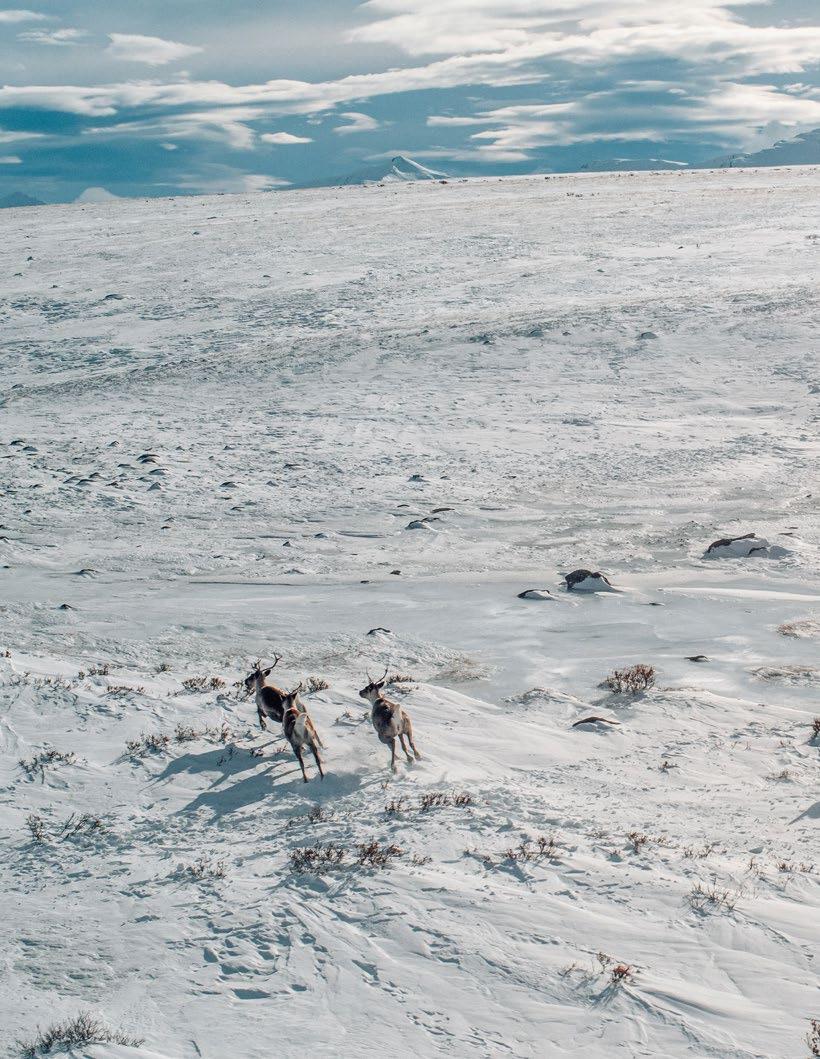
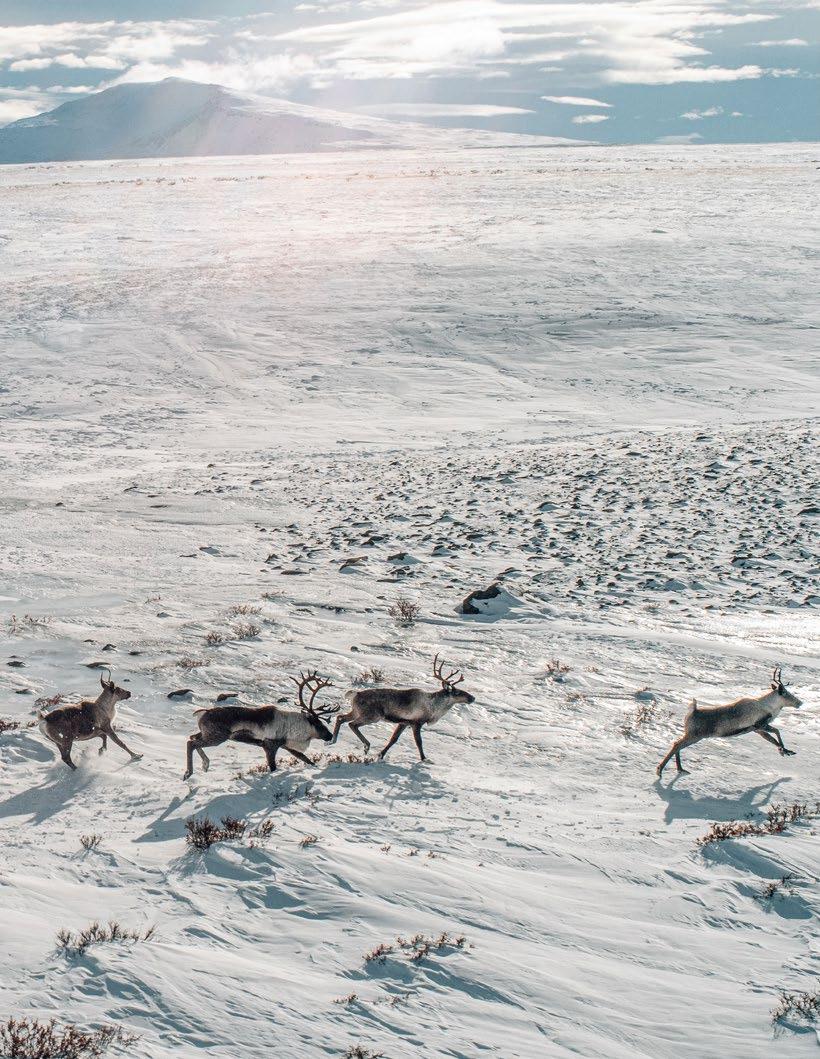
The Fish and Wildlife Working Group (FWWG) is an outcome of the Shared Decision-Making Agreement between the Tahltan Central Government (TCG) and the Province of British Columbia. It is composed of BC representatives from the Skeena Region, and Tahltan representatives from the TCG, Tahltan Band and Iskut Band.
It is a working group which supports the Tahltan BC Government-to-Government (G2G) Forum. Its main roles are:
Ȗ Provide shared recommendations to the G2G Forum on fish and wildlife matters;
Ȗ Respond to the G2G Forum direction and queries;
Ȗ Respond to wildlife initiatives from the Province and/or Tahltan;
Ȗ Complete an annual workplan and priorities and submit it to the G2G Forum for approval;
Ȗ Provide regular updates to the G2G Forum; and,
Ȗ Respond to fish and wildlife specific Shared Engagement Records to BC .
Annual workplans are completed each spring and provided to the co-chairs of the G2G Forum. Workplans provide the priorities and interests to work towards completion each fiscal year.
The key areas of interest are:
• Identifying priorities to support funding opportunities under the 3Nations BC (3NBC) Collaborative Stewardship Forum (CSF);
• Information Sharing: working on how to share information between governments and protect sensitive information from being misused;
• Linkages to other initiatives such as 3Nations and Tahltan Guide & Outfitters Association (TGOA) projects;
• Guardians Program;
• Tahltan Wildlife Policy;
• Predator Management;
• Inventories and hunting regulations to support harvest management;
• Habitat Management and Protection;
• Support for cultural activities – trapping promotion and culture camps; and,
• Moose Management Planning – Klappan, Spatsizi, Lower Stikine, and Liard Basin are priorities for population specific plans.
The FWWG is currently involved in the Klappan Moose Stewardship Plan, and will be seeking community direction to help develop a plan that includes:
• Population, habitat, harvest, and land use management objectives consistent with provincial and Tahltan moose management approaches;
• A moose stewardship plan based on Tahltan, local and scientific sources of knowledge;
• A plan consistent with moose management direction from Tahltan land use plans and conservation initiatives, Klappan Decision-Making and Management Board, and legal higher-level plan objectives; and,
• Community-based review and approval process for Tahltan.
As well, the FWWG has been preparing Tahltan Wildlife Hunting Regulation Proposals for the 2022-2024 licenced hunting seasons. Hunting regulations, outside of Limited Entry Hunting (LEH) regulations, are on a two-year cycle, so to make changes for the 2022-24 cycle, proposals are developed in 2021 and are passed in the BC legislature in the 2022 spring session. LEH regulations can be modified annually as LEH is based on establishing draws and annual harvests which can vary year-to-year. At this time, the FWWG is providing a summary of regulation proposals reviewed by the group and the suite of Tahltan Nation proposals to be considered for the 2022 hunting season.
The TCG recognizes the support and advancement of wildlife management matters through our G2G forum, 3Nations BC CSF, and ongoing Foundation Table negotiations. However, as we continue to live in a pandemic, the issues around food security, sustenance, maintaining our rights to harvest and pursue our way of life remain. Many of the regulations being proposed should be considered as precautionary principle management with the ability to modify them in future cycles.
Many of the proposed changes are based on community concerns regarding the distribution and density of licensed hunters and land users creating stresses on Tahltan food security. As well, proposals were developed regarding unregulated access and trail/ road development, conflicts with cultural and traditional practices, and our Tahltan and local knowledge indicating population concerns on culturally important species such as moose, Woodland caribou, Stone’s sheep, and mountain goat.
For example, our moose LEH proposal would shift the current SOFT 10 Antler Restriction for areas near communities to a LEH season with the draw to be jointly determined.
Applying SOFT 10 to the remainder of the Wildlife Management Units (WMUs) in our territory would provide more mature bulls for breeding and result in more consistent moose regulations within and among regions.
Tahltan are aware of moose population declines, increased licensed hunter harvest, greater hunting restrictions for moose in the southern Skeena Region, and continued moose population issues in other regions in the Province. All these factors make our proposals for moose even more important to protect moose and Tahltan food security.
Woodland caribou are considered as Northern Mountain Population ecotype, and currently, the Northern Mountain Population (NMP) Woodland caribou herds are considered in decline by the Province and Tahltan.
Tahltan knowledge, guide outfitter knowledge, and local knowledge are indicating changes in population numbers, decreased recruitment, and changes in seasonal ranges.
Draft management plans for the herds in the Tahltan Nation, predominantly indicate information gaps, and make recommendations which identify the need to:

• Develop a consistent monitoring program to track population size and trend;
• Manage harvest for sustainable use; and,
• Identify limiting factors contributing to suspected population decline.
Based on Tahltan and local knowledge, and ongoing monitoring programs, predator density (particularly wolves), are at densities well above the 3–6.5 wolves /1,000 km² required for population recovery or stable population growth (Environment Canada 2012, Hatter 2019). In addition, climate change trends have observations of drought/xeric conditions and poor forage quality for over ten years for the herds. While hunting may not be the dominant driver to the population effects, it is seen as an additive mortality to already stressed populations. All these indicators support our proposal to establish LEH seasons with jointly established draws or more constraining options such as closures.
It is believed the changing climate and increasing predator numbers are some of the primary causes for these changes.
We are also providing proposals to take advantage of the digital platforms being used by the Province for fishing and hunting licences. It is our view that all individuals purchasing a hunting licence should be required to provide information on their hunting and harvest efforts from the prior season before being allowed to purchase their licence. This requirement will, in our view, resolve concerns with the voluntary licenced hunter harvest system and provide more consistent information. The regulation change will provide more confidence on the information being shared on licensed hunter harvest between the two governments.
Tahltan are proposing a licensed hunter can only harvest a full curl Stone’s sheep once every three years and changing the Permit to Accompany to a jointly established annual draw. This approach will resolve several issues Tahltan have identified for some time on these concerns.
The Tahltan Lake no hunting/no shooting proposal has been submitted several times because it continues to be a public safety concern for Tahltan Fisheries Department personnel conducting salmon programs at the lake.
Finally, unregulated access continues to be a major issue. Trails are being developed in sensitive alpine habitats or trail networks continue to advance even with some form of regulation in place.
Tahltan are proposing some specific trail closures and elevational restrictions on key areas that continue to have unregulated access despite best efforts to limit it.
These areas include the Dome Mountain, Midway Ranges, Snowpeak-Mount McLeod, Caribou Pass, and Little Dease Lake areas for alpine elevation restrictions. Specific trails include Jade Boulder Road, Dome Mountain trail, Dease River-Adsit Lake crossing, and Little Dease Lake trails.
The full list of Tahltan led wildlife regulation proposals submitted include:
1. To establish motor vehicle restrictions for licensed hunters (both resident and non-resident) above 1,200 m for Dome Mountain, Midway Ranges, Snowpeak-Mount McLeod, Caribou Pass, Little Dease Lake areas;
2. To establish motor vehicle restrictions for licensed hunters (both resident and non-resident), on Jade Boulder Road, Dome Mountain trail, Dease RiverAdsit Lake crossing, and Little Dease Lake trails;
3. Apply a 5 km buffer to Tahltan Lake. It is a key cultural area for Tahltan Nation where Tahltan Fisheries Department works to sustain salmon populations that are critical to health and way of life for Tahltan;
4. For the Level-Kawdy, Tseneglode, Horseranch, Little Rancheria, and Spatsizi herds, apply a LEH with a season and draw to be jointly determined by Tahltan and Province or explore other options such as closures;
5. To establish a regulation to limit licensed hunters (both resident and non-resident) to one full curl Stone’s sheep ram once every three years;
6. To establish lottery or draw system for Permits to Accompany (PTA);
7. Establish a moose LEH season with the draw to be jointly determined by Tahltan and the Province for the following areas: Map F44 Dease River/Liard River/Jade Boulder Moose Area (MUs 6-19,6-22, 6-23 and 6-24) and Map F45 Iskut River Moose Area (MU 6-21) (See Skeena Region Hunter and Trapping Synopsis);
8. Establish a consistent SOFT 10 (Spike or Fork, Tripalm, 10-point) moose hunting season in WMU’s 6-19-26 and 7-52; and,
9. Hunters cannot renew licence or purchase tags without completing mandatory hunting efforts and harvest reporting through a digital licensing platform.
“It is our view that all individuals purchasing a hunting licence should be required to provide information on their hunting and harvest efforts from the prior season before being allowed to purchase their licence.”



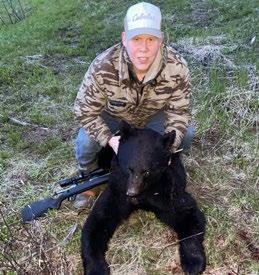
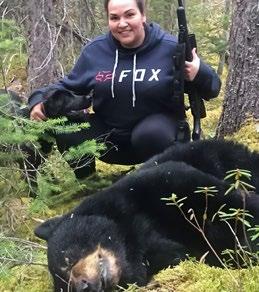
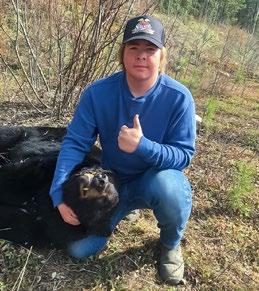






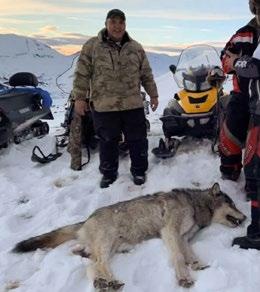 6. Eric Quock
6. Eric Quock
I shot a black bear this year for the predator management program. I was 32 weeks pregnant.
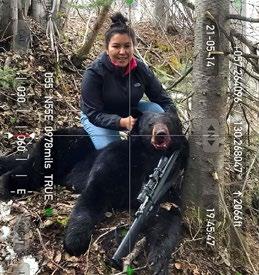

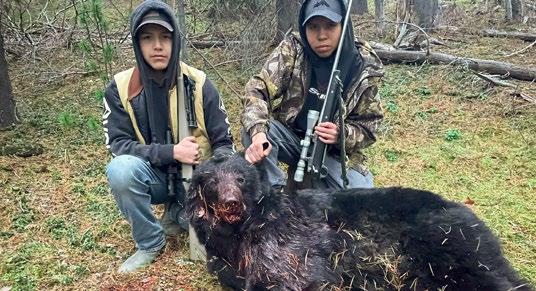
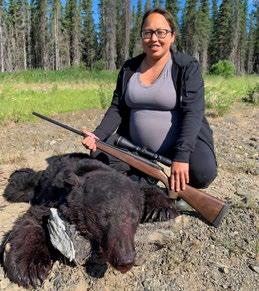
 11. Kammy Dennis
11. Kammy Dennis

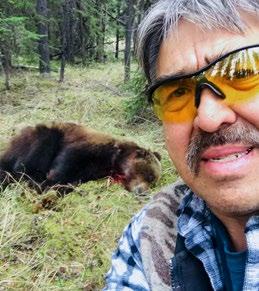


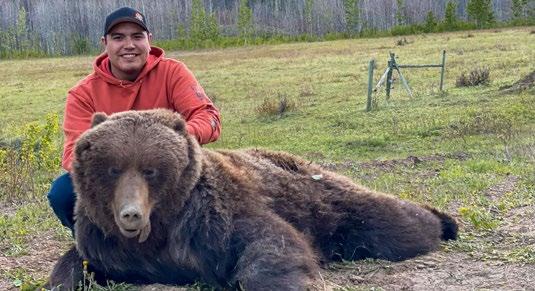

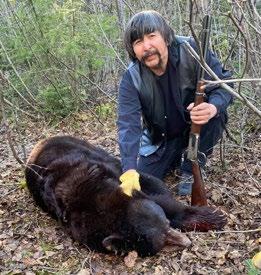
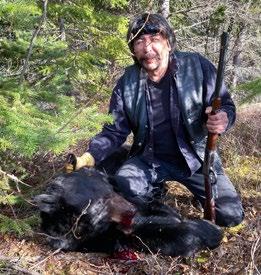 21. Russ Dennis
20. Nathan Nole
b. Nathan Nole and Deegan Nole
21. Russ Dennis
20. Nathan Nole
b. Nathan Nole and Deegan Nole



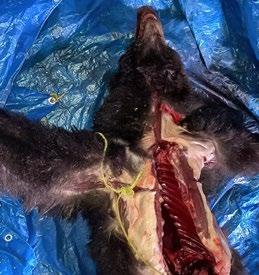

 23. Stuart Williams
23. Stuart Williams


 Dayle Creyke
Dayle Creyke
with his second porcupine harvest in September 2021, taking the quills off with a hat and putting them in a glass jar to give away or barter with local artists.
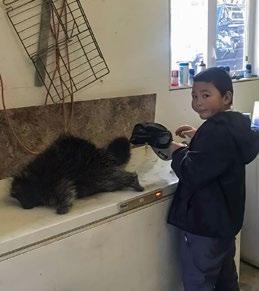

a. Kaylund caught it first but it got away. Hayden got it later with his little bros hook and line in its mouth.
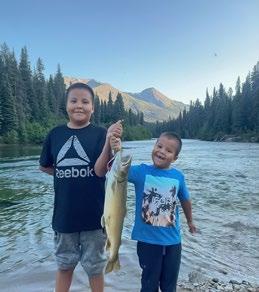
b. Our 11 year old son caught this huge Pike!

August 27, 2021
Amazing day fishing in the canyons where I caught this 28" steelhead.
 1. Es Tsu Flora Reid Cutting enecaga.
2. Fletcher Dennis Fletcher
4. Elliott Brown
1. Es Tsu Flora Reid Cutting enecaga.
2. Fletcher Dennis Fletcher
4. Elliott Brown



 5. Syllis Inkster Hackett River Dolly Varden. 6
7a
7b
6. Greg Inkster
5. Syllis Inkster Hackett River Dolly Varden. 6
7a
7b
6. Greg Inkster



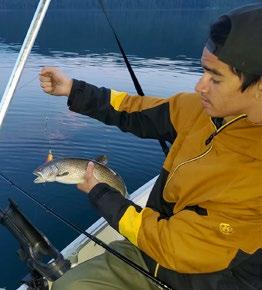

 8. Andie Louie
b. Cole (Kushy) Louie
Credit: Garth Perry
8. Andie Louie
b. Cole (Kushy) Louie
Credit: Garth Perry
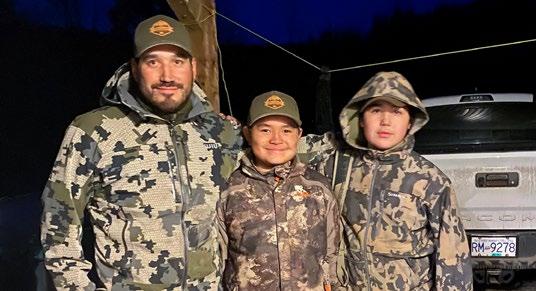

 10. Shannon Frank
b. Jeff, Brycen and Hunter Frank
10. Shannon Frank
b. Jeff, Brycen and Hunter Frank
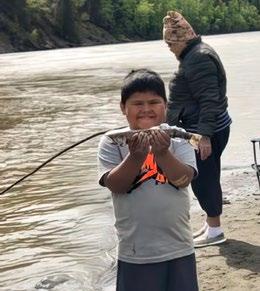



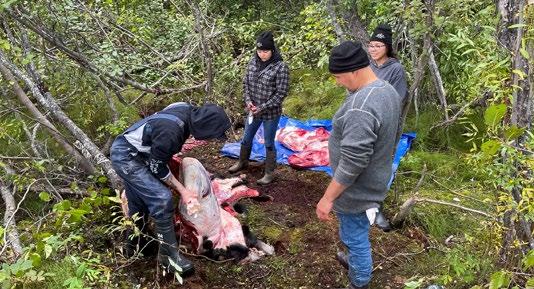 11. Kaleb and Janet Vance
12. Kimberley Marion
b. Shayl Nole, Haley Marion, Kianna Quigley, and Calvin Marion
11. Kaleb and Janet Vance
12. Kimberley Marion
b. Shayl Nole, Haley Marion, Kianna Quigley, and Calvin Marion
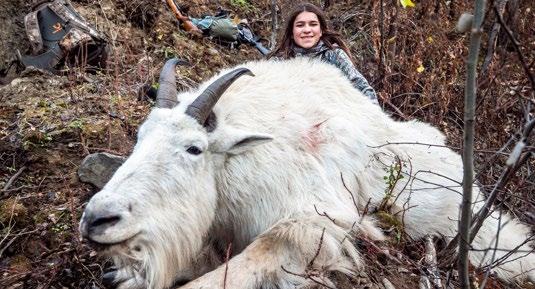
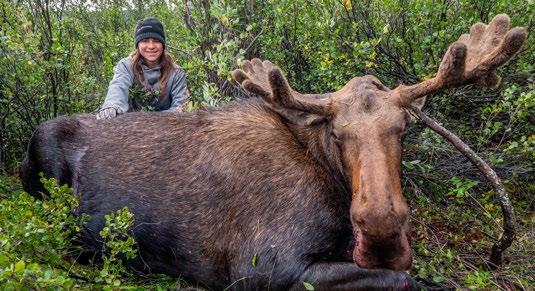

 13. Malakai Francis Day 13b
13a
13. Malakai Francis Day 13b
13a

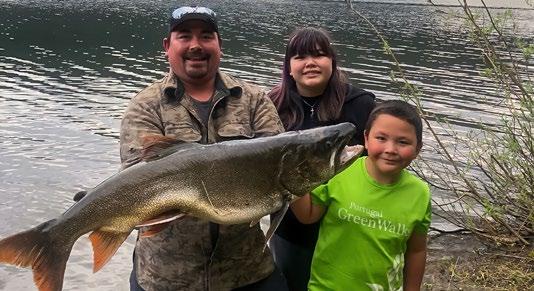


 16. Shawn, Paisley, and Fletcher Dennis
b. Shana and Paisley Dennis
16b
16a
17a
17b
17c
17. Cagney Etzerza
b. Karissa Thomas, Brianna Tashoots, and Delaney Nole
16. Shawn, Paisley, and Fletcher Dennis
b. Shana and Paisley Dennis
16b
16a
17a
17b
17c
17. Cagney Etzerza
b. Karissa Thomas, Brianna Tashoots, and Delaney Nole
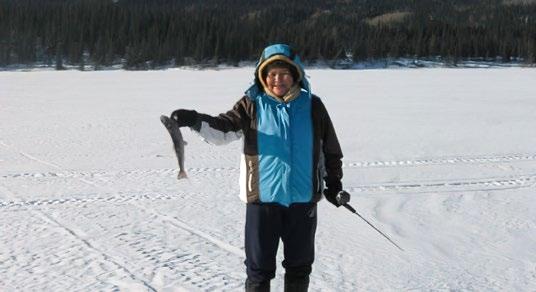


 18. Dora Tashoots
b. Geraldine, Dora Tashoots, Jimmy Abou
d. Jimmy Abou
18a
18d
18b
18. Dora Tashoots
b. Geraldine, Dora Tashoots, Jimmy Abou
d. Jimmy Abou
18a
18d
18b



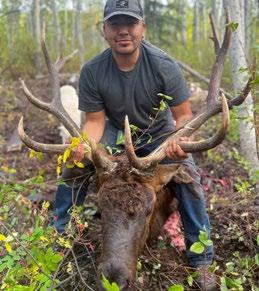
 19. Trysten Derrick
20. Deegan Nole Credit: Tiffany Beaulieu
19. Trysten Derrick
20. Deegan Nole Credit: Tiffany Beaulieu
59 – 2021 Stikine Salmon Harvests & Escapements
60 – Food, Social and Ceremonial (FSC) Comments & Concerns
61 – The Stikine River Salmon Studies
– Biological Contract
64 – Stikine Coho Assessment Feasibility
65 – Aboriginal Fisheries Strategy (AFS) Projects
– Tahltan Lake Egg Take
– Stikine Stock Separation
– Catch Monitor
– Little Tahltan Chinook Video Weir
– Chinook Aerial Survey / DNA Collection
– Sockeye Aerial Survey
– Coho Aerial Survey
– Tahltan River Chinook Salmon Assessment Feasibility (Sonar)
– Steelhead Study
71 – Fisheries Employment Update
– New Hires
– Employment Opportunities
– Training Boot Camp

No directed fisheries by Canada or the United States of America (USA)
No directed commercial fishing in Canada – small total allowable catch (TAC) allocation to the USA
There is no biological escapement goal for Sockeye in place.
I would like to take a moment to acknowledge and thank our Nation’s members who are taking an active role in the conservation of our Tahltan River Chinook stocks, by choosing to forgo their rights to harvest for the sake of the stocks.
The Tahltan Central Government (TCG) Fisheries Department has been actively asking our members to start their fishing later and focus their harvest on Sockeye to allow for most of the run to pass through the Telegraph Creek area and into the Tahltan River before fishing commences. Only when we all make a conscious effort to protect these declining stocks, will we see good results and an increase of spawners on the grounds. Those who are choosing to fish regardless of the concerns, are reaping the harvest off the conservation efforts of others.
I would like to say Mēduh to David Rattray and the Tahltan Elder’s Council for their input and assistance in discussions earlier on in the season and for their active role in having conversations with those members that are not complying with conservation efforts. I was very pleased to hear reports from our staff and from members that the fishing was good this season despite the poor pre-season forecast of 28,000 Tahltan Lake Sockeye which raised concerns earlier in the season. With no directed fisheries by either country, the run came in strong and made for more effective fishing in our FSC harvest.
Along with the Chinook concerns, I would also like to raise the topic of illegal food fish sales that are compounding the issue. Just to clarify that any sale of our food fish is considered an illegal activity. It is acceptable to barter with your food fish harvest, barter is defined as an exchange of goods or services for other goods or services without using money; you are free to barter, but any form of sales are illegal.

You cannot harvest and process your fish for sale. Whether that be dried salmon (enekāge), jarred salmon, whole salmon, smoked or otherwise. Taking our salmon resources from the river with the intention to profit from them in any way is illegal.
We have some members and associate members that have become comfortable with this illegal practice. It has to stop now or we will begin getting the authorities involved. Our stocks are declining. Marine conditions, climate change are issues. Production and survival rates are down, and we need to work together and hold each other accountable when others do not respect the rules.
As your Fisheries Director, I would ask that if you are participating in this illegal activity, whether selling or purchasing these products, please do your part and stop. Stop supporting this illegal activity. If you are offended by this statement, you are part of the problem.
We all have an obligation to defend and protect our natural resources. It is who we are. It is our inherent responsibility to protect and conserve for our current and future generations. Together we can make a difference for the better.
“The Tahltan Central Government Fisheries Department has been actively asking our members to start their fishing later and focus their harvest on Sockeye to allow for most of the run to pass through the Telegraph Creek area and into the Tahltan River before fishing commences.”
As the spring of 2021 approached us, we had hoped to be back into the pre-COVID-19 routine with the delivery of the annual Stikine Stock Assessment and Monitoring projects. As stated earlier, much to our dismay, this was not the case. Instead, we remained under a dark cloak of COVID-19 with concerns of the Delta variant, which was more prevalent, more aggressive, and more contagious than the prior variants we saw in 2020.
We did try to negotiate an all-Canadian staff to conduct the Lower Stikine Coded Wire Tagging project but without the support of Fisheries and Oceans Canada (DFO) on this, we quickly came to realize that we would not be positioned to take over this project as we had hoped. We will be putting this on our upcoming government-to-government (G2G) agenda for further discussion with DFO in the winter and spring of 2021/22. We will endeavor to make progress on this issue.
Discussions with DFO resulted in a modified delivery of these annual projects. The earlier scheduled projects, namely, the Chinook/Coho Juvenile Coded Wire Tagging, and Chinook Mark/Recapture were funded and manned by alternate means to ensure the health and safety of Tahltan Central Government Fisheries Department (TCGFD), DFO, and Alaska Department of Fish & Game (ADF&G) field staff conducting on the groundwork.
As in 2020, the US conducted the Coded Wire and Chinook Mark/Recapture tagging programs with an exclusive Alaska crew. We were successful in our early discussions and negotiated arrangements for a shared DFO/TCG staffing approach to the delivery of the Tahltan Lake Smolt project. DFO were the first crew on the ground, opening the camp, setting up the smolt traps, starting the enumeration, and remaining on site for the first three weeks. TCG staff relieved DFO and took over the count for the remaining duration of 5–6 weeks, completing the count, closing the camp and the project. TCGFD field technicians were deployed into the field in May, which was a significant improvement from the 2020 season which did not provide for placement until June.
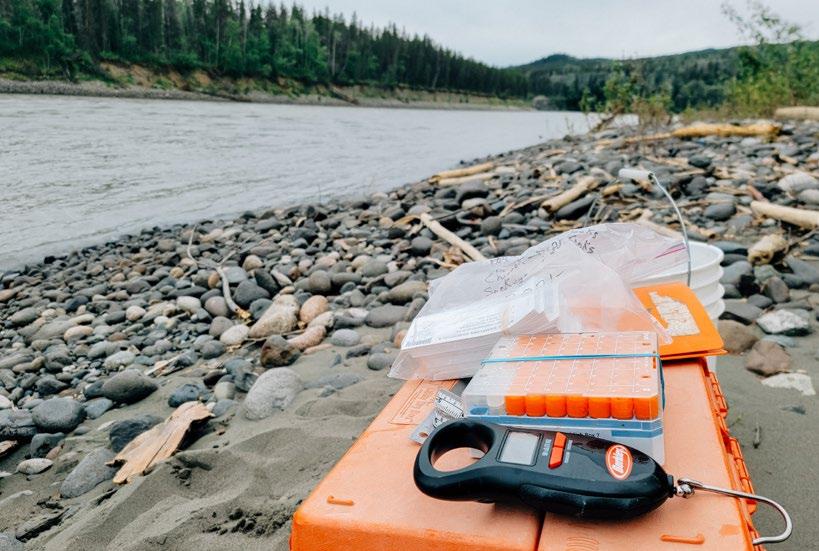
As in the prior season, Little Tahltan Chinook Video Weir Enumeration was operated (with funds from the Pacific Salmon Treaty Implementation Fund). The Tahltan Lake Smolt Enumeration, Tahltan Lake Adult and the Coho investigations, and Katete Sonar/ Iskut River Mark/Recapture projects were the three projects delivered and funded under this contract.
This work involves the enumeration, sampling, collection and reporting on the biological information on juvenile and adult Chinook, Sockeye and Coho salmon stocks at various locations in the Stikine River watershed.

The data collected is used for both short-term and long-term evaluation and decision-making. In season, DFO biologists use the data to determine run status and provide information to fishery managers to assist them in their management of sustainable First Nations, recreational, and commercial fisheries. Data collected may also be used for post season run reconstruction and may form part of the longstanding data sets used for future analysis.
Operate and maintain adult and juvenile collection devices including weirs, video and sonar systems, gee traps, beach seines, and gill nets;
Collect biological information and samples such as size, scales, otoliths, and DNA in an order prescribed by Project Authority;
Record, maintain, store, and transmit daily computerized data; and,
Apply tags to adult and juvenile salmon.
The contract secured a total budget of $344,000 for the 2021 field season, but again, only a very small portion of this budget was used this year. This contract typically supports twelve field positions from AprilOctober. Six positions were provided from July-October, a result of the earlier spring modifications in response to the persistent and ongoing COVID-19 situation.
April 15–May 31
A total of 62,288 Chinook salmon smolts were captured and tagged (a significant improvement over the 29,800 tags last year) along with 8,727 Coho salmon smolts. Capture and tagging efforts were hindered by high water and debris.
May 5–July 10
210 tags were applied to large Chinook salmon which was another noticeable improvement over last year’s 67 tagged, but still a reflection of the poor Chinook returns, and well short of the historical numbers tagged prior to the collapse of our Stikine Chinook salmon stocks. High water conditions hindered the start of this project.
Commercial Sampling did not happen as the Lower Stikine commercial Sockeye closure this year did not afford for this sampling project. DFO conducted a non-lethal in-river Sockeye assessment program in its absence from June 13–August 28. They observed 1,069 in their set net and 76 in their drift net efforts.
62,288
29,800
8,727
210
1,069 76
1.86m
1.55m
798,000
66% 34%

May 4–June 28
The Sockeye Smolt Enumeration at Tahltan Lake was operated jointly with DFO/TCG personnel. Smolt traps were set in Johnny Tashoots Creek resulting in a count of 1.86 million Sockeye salmon smolts leaving the lake. This was above the 10-year average of 1.55 million and twice as many as the 798,000 counted in 2020.
Preliminary otolith analysis showed 66% enhanced and 34% wild smolt composition. Last year, the split was 72% enhanced and 28% wild.
This is a welcome reduction in the enhanced component of the run. Managers are working hard to keep within the 50-50 guidelines as set out in the Pacific Salmon Treaty, but this has been challenging given the recent observations in reduced wild smolt survivals at their natal spawning grounds. This was staffed by Michael Nole, Fabian Vance, and Raina Feldman.

SOCKEYE SPAWNERS
43,245 PRE-SEASON FORECAST
28,000
2020 COUNTS
9,854
July 7-September 13
Commenced in July with the construction of the adult weir in preparation of the arrival of the returning Sockeye adults and resulted in a final weir count of 43,245 Sockeye spawners. This was well above the total pre-season forecasted return of 28,000 and a welcome improvement over the concerning return in 2020 of 9,854 Sockeye. This was staffed by Michael Nole, Peter Carlick-Beck, and Sheldon Dennis.
The 2021 egg take target was reduced from 6 million to 5 million as per the Stikine Enhancement Production Plan (SEPP) to account for the loss of Tuya Lake as an outplant site for future Transboundary Rivers (TBR) enhancement activities. The target was revised in-season to 1.5 million based on the escapement and natural production estimates.
We will continue to promote reductions of the target until the wild production rebounds.
September 15 - October 27
The Iskut Mark Re-Capture Project is intended to catch and tag adult Coho salmon in the Iskut River, with a plan to re-capture fish further up the river to then use that data to build a population estimate for the Iskut River Coho salmon. The project was postponed in 2020 but this year we were able to get staff out to participate with DFO staff in the project. Jared Dennis, John Nole, Fabian Vance and Peter Carlick Beck joined DFO on this project. They have tagged over 50 adult Coho to date. Further reporting of project will take place once project is completed, and the data is analyzed.
September 15 - October 7
Margaret Asp was sent down to the Lower Stikine to assist a DFO staff to test out sites on the Katete River for possible sonar locations. The crew was able to test out a few spots, but as before in 2019, flash floods and rain events proved to be very difficult for sonar in the system. The intent with this project is to use sonar technology to enumerate the Coho returning. Further reporting will be done once season is complete and data analyzed.
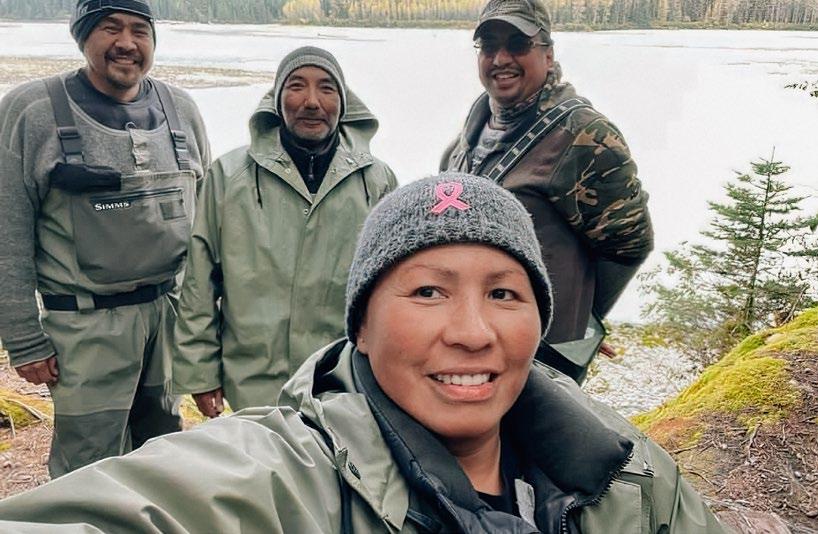
October 8 - October 27
This project will see the collection of genetic samples of Coho salmon, along with the recovery of any tags in conjunction with the mark and re-capture project. It will be done with both DFO and TCG staff already at the Lower Stikine camp. Peter Carlick-Beck switched out with Margaret Asp and will be on site for the completion of this field work. Further updates will be shared once the project is complete and data is analyzed.
Above: Coho crew: Fabian Vance, John Nole, Jared Dennis, and Maggie Asp.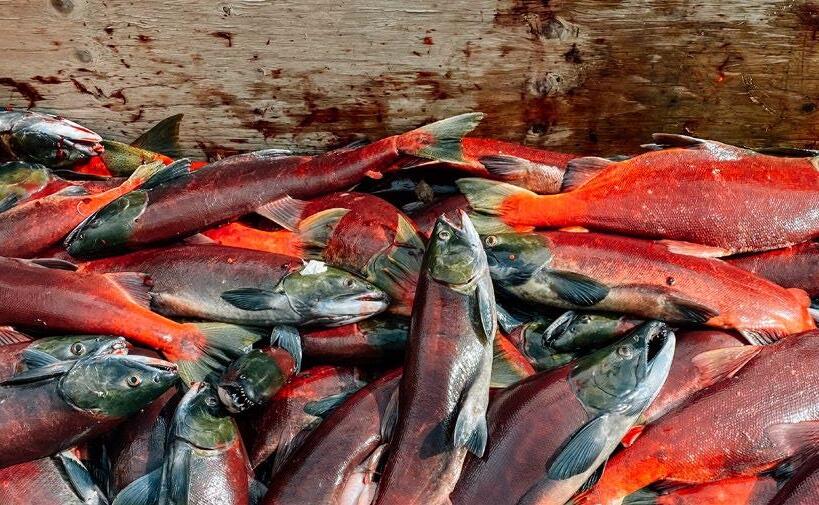
The AFS Agreement between the Department of Fisheries & Oceans Canada (DFO) and the Tahltan Central Government (TCG) provides the core funding for the Fisheries Department operations.
The TCG Fisheries Department received a total contribution of $519,000 in 2021.
It allows for office infrastructure, administration costs, vehicle purchases, insurance, and maintenance, equipment purchases and maintenance, management wages, meeting travel, training, and an increasing list of stock assessment and monitoring projects which are summarized here.
1989–2021
Funding for this long-standing project was provided through the TCG AFS Contribution Agreement in 2021. In prior years, we were required to complete a proposal and a bidding package to obtain funding. This made for some major concerns for us as First Nations people because we had to compete with any and all other potential organizations bidding on this contract. We appreciate the past discussions and the acknowledgement by DFO that this was not an ideal situation and their response to our repeated request to streamline the process and eliminate the concerning factors is overall, a big accomplishment.
We have continued increased fishing efforts at Tahltan Lake since 2010 to ensure that adequate broodstock is captured to provide 6 million Sockeye eggs to the Snettisham Hatchery in Alaska. Efforts include the retention of all green females captured at the primary spawning site and the augmented fishing crew for the peak of the spawning activities which capture and deliver females to the holding pens to improve the ability to maintain and reach the egg take targets.
Given the smaller egg take targets over the past few years, we have not been utilizing the alternate fishing crew, however, we continue to retain all the green females captured on the spawning grounds and hold them in large floating net pens until they ripen.

The crew was deployed to Tahltan Lake on September 6. Three egg takes were completed between September 11–17, and a total of 1.52 million fertilized Sockeye eggs were delivered to Snettisham Hatchery. Weather delayed one of the three egg transport flights. Camp was demobilized and all crew flown out on September 24 (we were scheduled to come out on September 23 however, weather delayed this).
Eggs from 576 females were collected and fertilized by 576 males respectively. Fecundity (# of eggs per female) was lowered again and was estimated at 2,639 which resulted in 1.5 million eggs delivered. In addition, 57 ovarian and Bacterial Kidney Disease (BKD) samples and 144 broodstock samples were taken and provided by field staff as per the project protocols.
Crew members were Cheri Frocklage, Drew Inkster, Sheldon Dennis, Peter Carlick-Beck, Derek Louie, Noreen Mclean, Ken Izzard, and Michael Nole. Raina Feldman returned as our camp cook and provided meals and general camp cleaning for the course of the project. I think we all came home a few pounds heavier thanks to the incredible meals and baked treats. We love you, Raina and appreciate all the great food you placed before us at the table.
Our Biologist Richard Erhardt was unable to travel to the territory to participate in the egg take this fall, however, he provided his expertise from his office in Vancouver and assisted on all levels. How does the old saying go? You don’t know what you have until it is gone? I felt this. Doing dual roles this season sure kept me busy and under pressure. I missed Richard being on the site, not only because he is a fixture on this project and a good friend, but also because his calibre of work and taking care of all the little details and the data is not an easy role to fill. I got so used to him being there, that I forgot just how much he brings to the team. I have a newfound respect, and a whole lot of gratitude for this man. Mēduh my pane.
The main project challenges this year included: very poor weather conditions on the Alaska side; limited fixed wing availability for egg delivery flights/critical egg take supply needs, and flight availability for crew mobilization and de-mobilization.
Successes this year included: excellent broodstock fishing conditions and results; adaptive planning and implementation of field operations; reaching the revised egg take target; and finishing the project on time.
Gratitude to our returning crew members for their ongoing commitment and the lending of expertise to new field staff on this project.
My thanks to the pilots and ground crew of BC Yukon Air for providing our crew mobilization flights, and to Billy O. for providing the emergency flight mid-take to bring out Raina to assist in the search and rescue. This was much appreciated.
We also extend our gratitude to the pilots from Ward Air and Coastal Helicopters from Juneau for egg haul flights. My sincere thanks to Keith Connor and Klappan Air Ltd. for an efficient de-mobilization of crew under less than favorable weather conditions. Many thanks to Kevin Steck and the crew at Snettisham Hatchery. We truly appreciate all the people on the other end that make sure the support fights, fuel, propane, supplies, and groceries keep coming in. We could not have done it without you.
And last, but not least, a big thank you to DFO for use of the camp facilities.
SOCKEYE EGGS OVER THREE EGG TAKES FERTILIZED EGG DELIVERY (Port Snettisham Hatchery) 1.52m324
SOCKEYE SAMPLES
July 11–August 6
June 18–August 18
CHINOOK SAMPLES
Raina Feldman and Fabian Vance were once again teamed up to sample the catches from the Food, Social, and Ceremonial (FSC) fishery in Telegraph Creek on the Stikine River. This program saw the collection of 324 Sockeye samples taken and 49 Chinook samples. Sampling is done to determine the biological characteristics of Sockeye and Chinook salmon. This year proved harder for staff to achieve the sample goal of 600 Sockeye, due to higher water levels and less people returning to fish because of road conditions and health restrictions.
4,094
SOCKEYE
LARGE CHINOOK
49 182 333
JACKS
July 4–August 14
The monitoring of the 2021 FSC fishery was done by long-time Catch Monitor Noreen Mclean. The project collects catch information from members and this information is tallied up and shared with DFO to help in the long-term management of the stocks. This year’s fishery saw 4,094 Sockeye, 182 large Chinook and 333 Jacks.
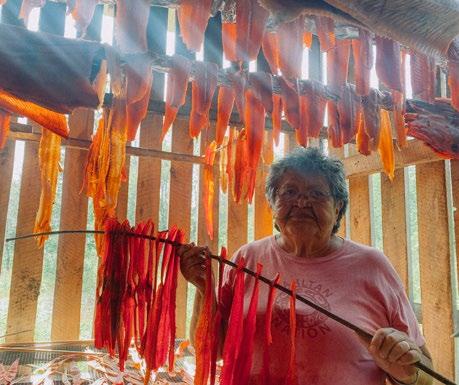
This project was staffed by Jared Dennis and Kyle Inkster and resulted in 1,037 large and 440 Jack Chinook salmon counted through the weir using a video camera monitoring system to reduce handling and stress of the returning Chinook salmon.
The crew reviewed videos daily to get a count of every fish that enters the system and looks for the presence of tags. The crew also walked the creek and looked for carcasses for DNA sampling, as the Little Tahltan stock has seen declining returns since 2007.
The optimal escapement is 3,300, as per the Transboundary Technical Committee Management Plan which guided the managers prior to the Pacific Salmon Treaty Chinook negotiations of 2003–04. This agreement has not been recognized by either country since the directed Chinook harvest started in 2005. Efforts to establish an agreed upon Biological Escapement Goal were unsuccessful and a system wide Escapement Goal is used as the measurement of success and/or failure for providing adequate overall escapement to the system.
The system wide escapement goal was not met, and a preliminary number has not been provided yet. This will be forthcoming during our Transboundary Technical Committee post season meeting in November. Marine survivals have been trending downward throughout the Pacific Coast.
1,037
440
3,300
FSC FISHERY CATCH SAMPLES – STIKINE RIVER 2021 FSC FISHERY CATCH MONITOR RESULTS LITTLE TAHLTAN CHINOOK VIDEO WEIR RESULTS LARGE CHINOOK JACK CHINOOK OPTIMAL ESCAPEJuly 31
The Chinook Aerial Survey was conducted by Fisheries Manager Kerry Carlick and Noreen Mclean. Conditions were good for flight, and we were able to get a good count on the Tahltan River which has been very difficult in the past few years due to high turbidity levels.
Results are as follows:
September 12
11 47
333 145
There were two sessions of DNA collection done for Chinook. First was conducted on the Tahltan River and Beatty Creek. Kerry Carlick joined DFO staff for the day and they collected 31 samples. The second session took place on Christina Creek and Verrett River. This session was done by TCG staff Kerry Carlick and Kyle Inkster; they were also joined by TCG Multimedia Director, Adam Amir. The team was able to get 18 samples for genetics.
Results are as follows:
43 25
4 0
November 2
The Aerial Survey that counts Sockeye at key index sites was done by Fisheries Director, Cheri Frocklage, and Fisheries Manager, Kerry Carlick.
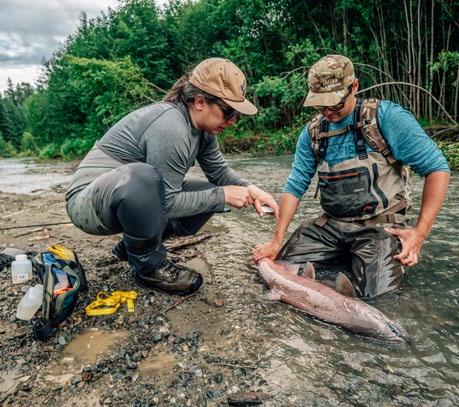
The Coho Aerial Survey was conducted with Cheri Frocklage and Kerry Carlick as observers. We departed Dease Lake at 9am, fog lifting and a chilly -14°. Survey conditions were ideal, excellent low/clear water conditions made for easy observations of spawners at the index sites.
Results are as follows:
BRONSON SLOUGH
76 77 0
BEATTY CREEK CHUTINE RIVER VERRETT RIVER SCUD RIVER LITTLE TAHLTAN RIVER PORCUPINE RIVER TAHLTAN RIVER VERRETT SOUGHS CHRISTINA CREEK VERRETT RIVER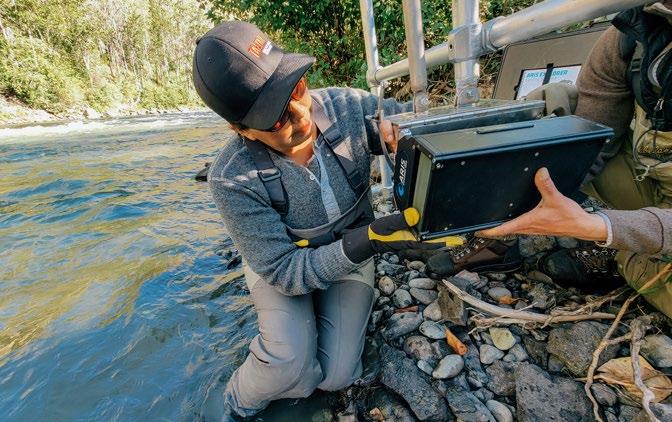

The intent for this project in 2021 was to get the sonar unit in the water and test out sites in early to mid-May, but that was put on hold again this year due to the road conditions and the site being right in the middle of a lot of construction and was not feasible due to activity.
The project saw a site visit from Margaret Asp and Kerry Carlick from TCG and one DFO staff on August 31–September 2. The trip allowed staff to get the sonar unit into the water just above the Tahltan River Bridge. The unit was successful in seeing fish on the monitoring screen. This site will prove to be a challenge though, due to the very dynamic nature of the river in terms of water level, especially in spring.
The end goal of this project is to get a complete count of Chinook and Sockeye entering the Tahltan River watershed. This, along with the counts at Little Tahltan and Tahltan Lake, will give us a much clearer picture of what is returning to the system.
Further works and site visits will be conducted in 2022.
Overwintering Behaviour, Immigration and Emigration pattern, Spawning Period and Spawning Sites of Steelhead Trout (Oncorhynchus mykiss) Indigenous to the Tahltan River, British Columbia
This is a TCGFD project that Biologist, Peter Etherton has been contracted to assist with and to lead the study with TCG Fisheries Manager, Kerry Carlick. The goal for the project is to get a better understanding of the population of Steelhead that return to the Tahltan River and that our Tahltan members have always utilized as another food source later into the fall and winter months.
The radio tagging study will have four components that we will want to better understand:

Overwintering sites and associated habitats;
Enter and exit timing into and out of the Tahltan River;
Migration rate; and,
Spawning location and period of spawn.
The 2021 field project was conducted from August 31 –September 28. Field staff included Peter Etherton and Kyle Inkster, with assistance from our Fisheries manager. The crew was able to apply six radio tags. Of those six fish tagged, four migrated up past the Tahltan River further up the Stikine. This was determined using telemetry towers stationed on the Stikine by the Water Survey of Canada Gauge, mouth of the Tahltan, further up the Tahltan River by Lava Beds and one more tower further up the Stikine just above the mouth of the Tahltan River. The capture method was mainly a set net on a boom, which was located at the 2 Mile eddy located just upriver from the air strip in Telegraph Creek. The few attempts at rod and reel by the crew was unsuccessful on the Tahltan River.
The project had a goal of 100 tags but, due to the catches falling right off, it was decided to pull out of tagging efforts this year to come up with an alternative approach to the study. The crew returned October 13 for a few days to test out fish capture methods to assess if timing might have been an issue. Further reporting to follow on this project.
Peter is a member of Stikine Claw/Thicke family and the son of Winnie Carlick and Peter Beck. Peter joined our team this year and has been a great addition to our team. Peter loves the outdoors and really enjoyed his field work experiences.
Ts’imgal T’ede (Ayce Nole) and her partner Ken Izzard stepped in on short notice and were hired for egg take and the TSI Tahltan Lake fall survey. Mēduh to them for being ready to leave on an airplane in less than twentyfour hours. Ken having never been on a plane before, flew on a small bush plane from Kluachon Lake to Tahltan Lake in windy weather!
The TCG Fisheries Department is currently seeking applicants for the following job postings:
Ȗ Aquatic Protection Officer (APO)
Ȗ Fisheries Field Technicians (for 2022 field season)
If you are interested in applying for either of these positions, please contact:
Ȗ APO position – Ann Ball at Tahltan OnTrack or Cheri Frocklage at: fisheriesdirector@tahltan.org
Ȗ Field Technician Positions – Kerry Carlick at: fisheriesmanager@tahltan.org

TCGFD staff took place in an extensive training boot camp that consisted of several different and key training elements that ensure that our staff have the most up to date and the most current training available to ensure highest level of safety and quality of work.
The training boot camp took place in Terrace, BC and done consecutively from April 16–May 1. There were four components to the training: First Aide, UTV Training, Working Safe Near Water and a 10-day Fisheries Fieldskills program. Staff that Participated: Michael Nole, Jared Dennis, Noreen Mclean, Margaret Asp, Sheldon Dennis, John Nole, Kyle Inkster, Drew Inkster, Raina Feldman and Fabian Vance. Staff were also joined by Fisheries Manager Kerry Carlick who organized and helped with crew logistics.
• Working Safe Near Water Certification
(formerly Swiftwater Rescue) – April 17 & 18

This course is one of our most important components to our training requirements, as the Stikine watershed is home to several very swift rivers and creeks. The work our staff does requires them to work on or near a lot of these swift systems, so it is important they know what to do in the case of an emergency related to working on or near the water. The training, as in past years, was put on by Raven Rescue out of Smithers, BC.
• Level 1 First Aide & Transportation Endorsement
– April 19–20
The TCGFD staff were all up for re-newels of their Level One First Aide and transport endorsement certifications. This course is an industry standard for any job site and with the work we do the Transport Endorsement is key, as any emergency event will most require us to transport the person from a remote site. The training through Saint John’s Ambulance at their office in Thornhill, BC.
• All Terrain Vehicle Certification – April 21–22
This was a new training course for the FD as this year we purchased a SXS machine for one of our projects and with future plans to use that type of equipment for more works it was necessary to get all staff certified in the safe handling of UTVs. The training was put on by Mathew Clarabut and took place over two days, in two separate groups.
• Fisheries Field Skills Certificate
– April 16, April 23–May 1
This was a 10-day extensive course that saw all the staff come out with a new professional designation in BC, Applied Biology Technician. The course consisted of some online components, classroom theory and lot of field scenarios several different important components of fisheries work that staff were familiar with and some they weren’t.
The staff will now all be able to conduct or perform the following:
» Standard fish and fish habitat inventory and assessment procedures;
» Backpack electrofishing surveys;
» Water quality sampling procedures;
» Fisheries field hydrology procedures;
» Advanced fish habitat and fish population assessments;
» Biological sampling methods and design a biological sampling program;
» Fish inventory and capture procedures,
» Design and conduct a stream invertebrate sampling program;
» Construct and install streambank restoration techniques and structures; and,
» Isolate an instream construction project and conduct a fish salvage.
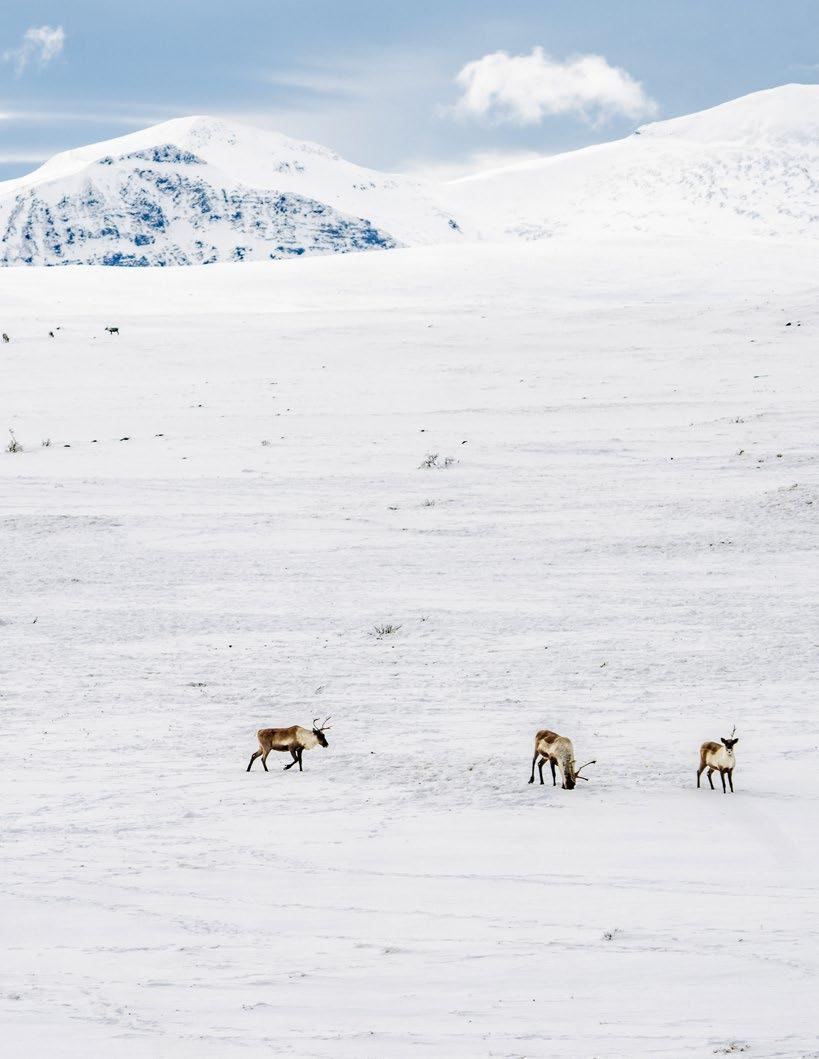
The Tahltan Stewardship Initiative (TSI) is our opportunity for transformative change based on the recognition of Tahltan title and rights. Now, we can have a say in decisions that matter for our people in accordance with our values and knowledge. We decide how to protect our culture, care for our lands, water, fish, and wildlife.
We decide how to sustainably manage our natural resources and economic development in our territory. We can meet our responsibilities, make decisions, and manage our lands. Through TSI, the rules are changing. And we are shaping the process.

TSI will support the Tahltan Nation to assert selfdetermination and fulfill our inherent stewardship and caretaking responsibilities for our territory.
The preliminary initiative vision is:

Stewardship is the careful and responsible management of something entrusted to one’s care. The TSI will help the Tahltan Nation to plan for and manage our land, water, wildlife, fish, and natural resources. It will ensure we take care of Tahltan Territory now and for future generations.
By protecting our environment and relationship with the land including culturally significant areas, conserving wildlife, managing economic development, and asserting jurisdiction over Tahltan Territory, we will advance our role in and refine shared decisionmaking processes.
“The Tahltan Nation will fulfill its inherent stewardship responsibilities for all lands, water, wildlife, fish and natural resources in Tahltan Territory.”

Tahltan Nation is founded on sacred responsibilities and inherent rights granted to us by the Creator. The desire of our Nation is to become a fully selfdetermined and self-governed people. As reflected in our 1910 Declaration of the Tahltan Tribe, our leaders have worked for generations to build a strong system of governance that is true to our unique values as a Nation while being responsive to the realities of Tahltan people.
The TCG is working to modernize its relationship with the Province of British Columbia and the Government of Canada to achieve effective shared decisionmaking and collaborative stewardship for Tahltan Territory. At the core of our government-to-government relationships will be respect and recognition of Tahltan title and rights. TSI will advance Tahltan interests and further reconciliation.
The opportunity to further advance shared decisionmaking in Tahltan Territory has arisen from the Province of British Columbia’s Declaration on the Rights of Indigenous Peoples Act (DRIPA). Brought forward in 2019, this legislation intends to harmonize provincial laws with the United Nations Declaration on the Rights of Indigenous Peoples (UNDRIP).

Recognizing the timing of this opportunity and building upon the progress of previous work, the TCG is supporting TSI to advance Tahltan interests. The message from the Nation is clear: Tahltans have never ceded or surrendered our lands and continue to exercise our rights and jurisdiction over Tahltan Territory. The Nation is vested with the sacred responsibility to manage our lands and resources for the benefit of all Tahltans.

This means the TSI framework will support recognition of the Tahltan right of free, prior, and informed consent regarding lands, water, and natural resource use, the preservation of Tahltan culture, traditions and ceremonial practices, and the right for Tahltans to participate in determining outcomes in decision-making matters which affect their rights.
Initiatives that have contributed to this work include:
1980s
Tahltan Ancestral Study with Elders
2003
Out of Respect Report

2013
The Shared Decision-Making Agreement with the Province of British Columbia
2016
Wildlife Department formed within the TCG
2018–2021
The Collaborative Stewardship Framework with the 3Nations and the Province of British Columbia
2020
Fisheries Department formed within the TCG
1987
Resource Development Policy
2005
Formation of the Tahltan Heritage Resources Environmental Assessment Team (THREAT)
2015
Lands Department formed within the Tahltan Central Government
2017
The Klappan Plan and the Klappan Management Board
2019
Culture & Heritage Department formed within the TCG
Each of these projects and efforts has helped to advance our Nation and support our unified goals founded on the principles of mutual respect, recognition, and reconciliation of Tahltan title and rights. Together, we work to protect the environment, safeguard our culture and heritage, ensure shared revenues and other benefits from sustainable development, and strengthen the well-being of our Tahltan Nation family.
TSI will align related Tahltan governance, reconciliation, land management projects and activities from the TCG Communications and External Relations, Culture and Heritage, Fisheries, Lands, and Wildlife Departments.
BELOW IS A LIST OF PROJECTS UNDER THE TSI:
• Assessment of Ecosystem Services & Climate Change Resilience
• Capacity Development Project
• Caribou Stewardship Project
• Communications and Engagement Project
• Cultural Heritage Project
• Ecosystem & Climate Project
• Fisheries Stewardship Project
• GIS Spatial Database Project
• Land Governance Framework & Operational Policies Project
• Predator Program
• Tahltan Guardian Program
• Tahltan Infrastructure Assessment (Energy, Access, & Mineral Potential)
• Tahltan Indigenous Protected & Conserved Areas (IPCAs) Project
• Tahltan Land Stewardship Plan
• TCG Archives Project

• Water Resources Project
• Youth Stewardship Program
TSI will also include related activities and projects initiated with the Province of British Columbia and Canada by agreement.
THIS INCLUDES (BUT IS NOT LIMITED TO) THE FOLLOWING:
• Canada Nature Fund Target 1 Challenge: Establishing Tahltan Indigenous Protected & Conserved Areas (IPCAs)
• Ice Mountain Agreement / Conservancy
• Shared Decision-Making Agreement (SDMA)
• Shared Prosperity Agreement (SPA)
• Tahltan Nation Land Use Planning (TLUP)
• Tahltan-BC Joint Land Use Plan (TBCLUP)
• Wildlife Accord
COMING SOON
– GET INVOLVED!

Coming soon, the TCG will launch a brand new TSI website with members only information on each of our projects, current and future engagement opportunities and more. The cornerstone of the TSI is community involvement. Questions? Comments? We want to hear from you:
communications@tahltan.org


TSI BASE MAP
DRAFT MAP v 1.1 – 2021/06
LOCALITY
LAKE
LANDFORM
TAHLTAN NATION TERRITORY
ECOLOGICAL RESERVE
PROTECTED AREA


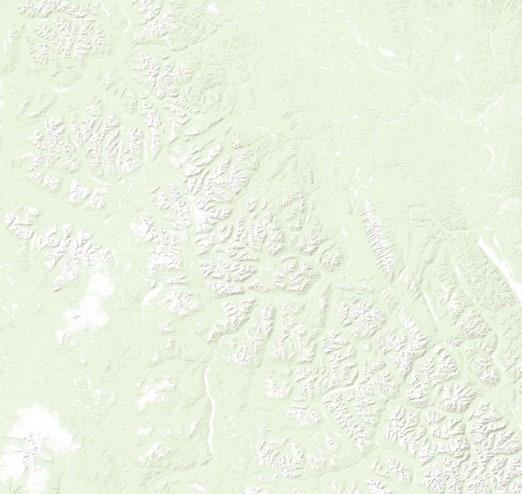
PROVINCIAL PARK
This map represents the general boundaries of Tahltan territory based on the information available and reviewed as of the date of its creation. It does not represent a definitive or final statement of the areas to which Tahltan Aboriginal title and rights apply.
Tahltan Nation continues to do research and assemble further information and data, and adjustments to the boundaries reflected in this map may be made in the future where appropriate and supported by evidence.


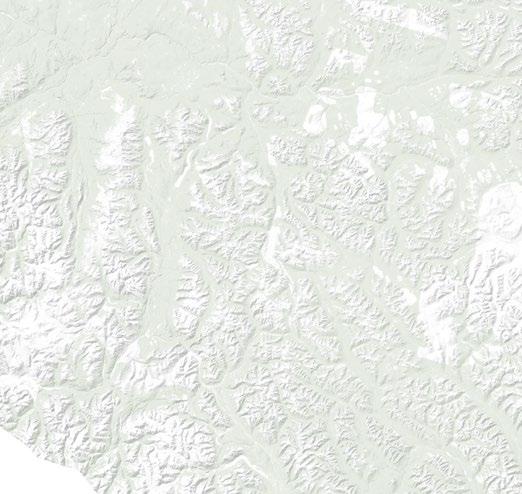
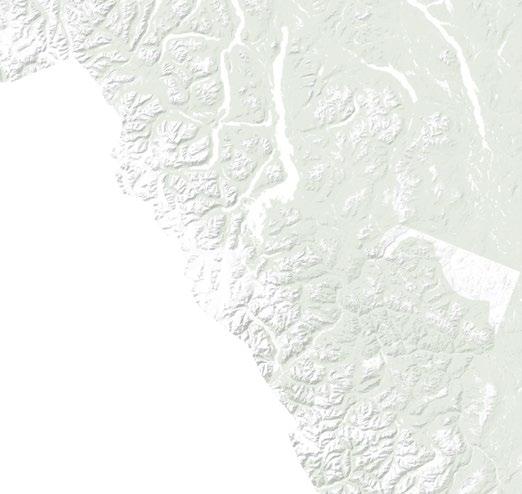


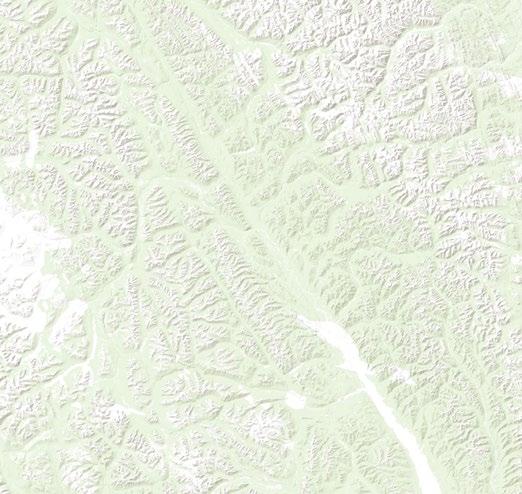



The Tahltan Stewardship Initiative (TSI) will further the interests of the Tahltan Nation through its projects and related agreements. TSI has a unique media strategy to bring attention to this important initiative and support generational change.
Tahltan land to be protected in partnership with conservation organizations, Industry and the Province
Tahltan Nation Demands Bell Media Cease Airing of 'Jade Fever' and the Province to Suspend all Jade and Placer Mining in Tahltan Territory
Province of B.C. and the Tahltan Nation begin talks on shared decision-making
BC, Tahltan Nation step up wildlife patrols after ‘contentious’ hunting season
Tahltan and B.C. further their vision of shared prosperity
Province teaming with Tahltan Nation on wildlife stewardship
Protecting the Sacred Headwaters of the Klappan Valley
Nation Introduces Predator Management Policy
Tahltan Central Government – News Release | April 8, 2021
A new conservancy to protect the environment and wildlife on Tahltan Territory has been created in an area of northwestern B.C., historically known as the Ice Mountain Lands, adjacent to Mount Edziza Provincial Park. The Tahltan Central Government, the Province, Skeena Resources Limited, the Nature Conservancy of Canada and BC Parks Foundation have worked in partnership to create the conservancy.
tahltan.org/tahltan-land-to-be-protected-in-partnership-withconservation-organizations-industry-and-the-province
The Canadian Press | September 3, 2021
There will be more provincial conservation officers and Tahltan guardians patrolling the nation’s territory in northwestern British Columbia this hunting season. The province and the Tahltan Central Government say in a joint statement they’re working together on wildlife stewardship and furthering their commitments to reconciliation.
thestar.com/life/2021/09/03/bc-tahltan-nation-step-up-wildlifepatrols-after-contentious-hunting-season
Tahltan Nation Demands Bell Media
Tahltan Central Government – News Release | May 18, 2021
The Tahltan Central Government has contacted Bell Media, the Discovery Channel, and Omnifilm Entertainment to demand that these companies suspend airing the show “Jade Fever”, which follows a jade operation in Tahltan Territory and fails to demonstrate any consideration of impacts to Tahltan rights and title or depict responsible environmental stewardship.
tahltan.org/tahltan-nation-demands-bell-media-cease-airing-jadefever-and-the-province-to-suspend-all-jade-and-placer-mining-intahltan-territory
Tahltan Central Government – News Release | June 15, 2021
The Tahltan Central Government and the Province of British Columbia are starting negotiations on the first consent-based decision-making agreement ever to be negotiated under the Declaration on the Rights of Indigenous Peoples Act.
tahltan.org/province-of-b-c-and-the-tahltan-nation-begin-talks-onshared-decision-making
Tahltan Central Government – News Release | June 10, 2021
The Tahltan Central Government, Iskut Band Council, Tahltan Band Council and the Province have entered into a Shared Prosperity Agreement (SPA), setting the foundation to collaboratively achieve long-term comprehensive reconciliation and land-use predictability.
tahltan.org/tahltan-and-b-c-further-their-vision-of-shared-prosperity
Min. of Forests, Lands, Natural Resource Operations and Rural Development / Tahltan Central Government – News Release | September 3, 2021
There will be an increased presence of Tahltan guardians and B.C. Conservation Officers within Tahltan Territory this year, as the Province of British Columbia and the Tahltan Central Government work together towards cooperative wildlife stewardship and continue their shared commitments to further reconciliation.
tahltan.org/province-teaming-with-the-tahltan-nation-onwildlife-stewardship
The Tahltan Land Stewardship Plan (TLSP) is one of the main projects under the TSI. The TLSP will be based on Tahltan knowledge and worldview, local knowledge and science and will describe how we will continue to take care of our land, water, fish, wildlife, and other natural resources. This is an important document that will, among other things, identify and ensure that the most sacred parts of our territory are protected for all generations to come.
The TLSP is being developed by Tahltans for Tahltan. The TLSP working group is assisting the Fish and Wildlife Departments to develop survey questions to include on the new Tahltan Stewardship Initiative (TSI) website. These surveys will be part of the first round of questions that will assist the TLSP working group to determine what is important to Tahltans and how membership would like to participate in and contribute to the TLSP project. The responses to these initial survey questions will also help us to create more in-depth interview questions when we begin to develop land and resource management direction in later stages of the planning process.
COVID-19 has significantly impacted our plans for engaging with membership and has limited our ability to meet with you in person. It is critical that Tahltans have input into this process. The upcoming surveys on the TSI website will be one of many ways that community input will be incorporated into the process. Please take the time to inform yourself on the TSI, the TLSP, and think about how you can contribute to these important initiatives.

The Fisheries Stewardship Project brings Tahltan knowledge, worldview, and science together to ensure that we are taking care of and protecting our fish and their habitat. As First Nations Peoples, we have always honoured, protected, and relied upon our lands and our resources. These resources are vital to the nutritional, social, economic, and cultural well-being of our Nation. As our Ancestors were before us, we are responsible for protecting our land, water, and resources for the purpose of passing on our traditional values and practices to our future generations.
To uphold our obligations as fisheries stewards, we must have both knowledge of the status and strength of our fish stocks, as well as the condition of their habitats and any past, existing, or foreseeable threats to the health of that environment. The objective of our field investigations within our Traditional Territory is designed to answer these key questions:

Fish population assessments to ensure fish stocks are sustainable with the harvest rates that they are subject to;

Habitat assessments to identify if their habitat has been impacted by development or natural barriers to assure vital protection; and,
If necessary, rehabilitation of their habitats.
We are all connected to our fish as they are integral to our food security, and our spiritual and cultural well-being. They are part of who we were and who we are as Tahltan people. We are fish people of the mighty Stikine River. We defended our territory and our resources, often at the cost of our own blood. We will continue to defend our fish and the habitat they rely on to ensure that our future generations will be able to practice the spiritual and cultural connection to our land and aquatic resources.
Through TSI, several subprojects are occurring led by the Fisheries Department. During the busy summer and fall season, the Fisheries Department operated a number of TSI field projects in the focused fisheries areas of interest as listed below:
HATCHAU LAKE
(located at the headwaters of the Hackett River)
July 5–15. Surveys of salmon habitat were done including sediment quality sampling, bathymetric (lake depth) mapping, fish passage, and hydrology. Patrick Hudson and John Nole staffed this project.

HACKETT RIVER
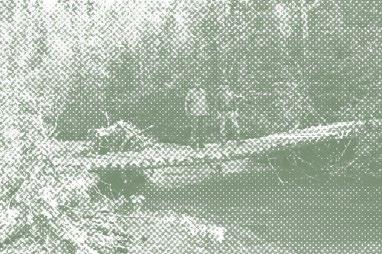
July 16–August 13 and October 1–21. Focus here was on the assessment of both juvenile (rearing) fry and adult (spawning) salmon for age class composition, spatial distribution, and relative abundance. We also did additional hydrology work, looked for potential fish access restrictions and sought to improve field crew mobility options. Richard Erhardt, Drew Inkster and Sheldon Dennis worked on this project.
RAIL GRADE SURVEY
August 10–20. Conducted a rail grade inspection with an engineer to assess fish passage issues and develop reclamation prescriptions to restore fish passage where appropriate. Also, re-sampled the groundwater wells at Kluakaz strip, downloaded data loggers and installed additional temperature loggers and groundwater wells. Patrick Hudson, Fabian Vance and Roy Keery staffed this project.
KLUATANTAN & KLUAYAZ LAKES
May 17–24 – Kluatantan Smolts. Spring field work to test juvenile capture methods, and a site recon. Kerry Carlick, Sheldon Dennis, and Kyle Inkster contributed to this project.
September 26–October 4. Performed new or additional bathymetric mapping in the Lakes. Assessed for fish presence / spawning, habitat conditions and passage in Kluatantan Lake, along with water chemical profiling and sediment sampling. Patrick Hudson and Peter Carlick-Beck worked on this project.
August 24–27. Conducted an overview watershed assessment to determine post-fire impacts. This included a day of overflight flown by Patrick Hudson, gauging of river discharge, water quality sampling and downloading a data logger at the Hydrometric station.
September 9–15. Accomplished detailed spawning area surveys, additional bathymetric mapping, groundwater / surface water investigations and sampling. Also did an overflight of the Trib 2 and lower Johnny Tashoots Creek to assess for the presence of spawners. Patrick Hudson, Drew Inkster, Ayce Dennis, Ken Izzard assisted with this project.


In addition, as part of our ongoing capacity building strategy, this season we continued to develop the means to conduct drone surveys. This included the purchase of an initial drone unit, training and Remotely Piloted Aircraft System licensing of staff member Drew Inkster, and the implementation of pilot / test surveys at sites of key interest to direct future use and application. These included Tahltan Lake spawning grounds, Tahltan River slide, Hackett River main spawning area at Pyrrhotite Creek. The drone surveys will be used to estimate/track changes at the slide, analyze Tahltan Lake spawning depth estimates to support the dam redesign, and to pilot test using the drone to estimate spawner numbers at the Pyrrhotite Creek spawning area.
June 15 – August 6. Margaret Asp patrolled the food fishery, relayed fisheries information to members, and reported any infractions.
The Wildlife Department currently has several projects that are a part of the TSI including the following initiatives:

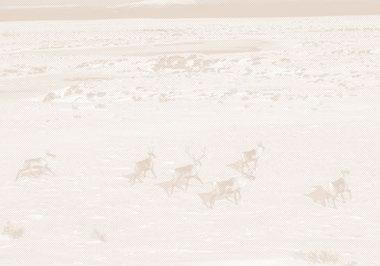
Northern Mountain Population (NMP) Woodland caribou are currently designated as “Special Concern” under the federal Species at Risk Act (SARA). In Tahltan Nation, there are seven herds, all important to the Nation for traditional uses, food security, and sustenance needs.
The Level Mountain-Kawdy Plateau, Tseneglode, Spatsizi, and Edziza Woodland caribou herds have limited current information on population numbers, habitat use, and predation over the last ten to twenty years. Three of the four herds are found in Tahltan spiritually and culturally important areas, one of the populations is declining, and two of the herds are in relatively heavily impacted areas from mineral development and licenced hunting/access. Tahltan knowledge, community knowledge, and Tahltan Guide & Outfitter knowledge are the robust data sources being used to support management, land use, and conservation planning while the scientific knowledge is being collected by Tahltan.
Limited knowledge on wolf numbers, pack sizes and movements, and the predation rate on culturally important ungulates such as Woodland caribou and moose are affecting Tahltan management abilities to ensure sustenance needs are met, food security, and to ensure land use management strategies and conservation areas are addressing habitat needs, critical habitats, movement corridors, and seasonal ranges in light of climate changes and human activities.
Tahltan have traditionally managed these herds through our knowledge and understanding of the historic seasonal ranges, movement periods and corridors, and changes in range use and numbers over time. However, Tahltan citizens are expressing concern on the apparent changes to seasonal range, movements, and declining numbers of caribou herds for over ten years which are not consistent with long term traditional and community knowledge.
Through TSI, the process of Tahltan Land Use Planning and furthering the establishment of Tahltan Indigenous Protected and Conserved Areas (IPCAs) is developing management direction, zoning, and conservation goals for the herds. Information is needed to create an updated understanding of the Woodland caribou herds and their relationship with wolves to support the advancement of Tahltan IPCAs through a Tahltan land use planning process.
In response to dwindling wildlife populations and increased conflict between community members and predatory species, the Tahltan Central Government introduced the Tahltan Predator Management Policy
This robust policy encourages and incentivizes Tahltan members to exercise their constitutionally protected Aboriginal hunting rights to harvest predatory species, including black bears, grizzly bears, and wolves.


The Predator Management Policy requires Tahltan members to harvest predatory species in compliance with Tahltan cultural practices and provincial regulations, to the extent that the regulations do not contradict Tahltan law or rights. Members are required to utilize each species to the extent possible for cultural purposes such as food, clothing, regalia, tools, medicine, and/or ceremony.
The TCG Wildlife Department will be responsible for implementing the Tahltan Predator Management Policy and will record harvest numbers from the Tahltan people. The initiative will help stabilize wildlife populations, protect local communities, encourage culturally important Tahltan practices, and aims to set a strong foundation for future wildlife management practices and initiatives.
To view the Caribou Monitoring Program video, visit: tahltan.org/ tahltan-wildlifeguardians-communitybased-climate-changemonitoring-program
The Tahltan Central Government (TCG) started a study in 2019 to:
Collect information on the movements, seasonal range use, and population of the herd;
Engage with the communities, Elders, and Youth on caribou and climate changes both historic and current; and,
Collaboratively develop climate change and caribou management strategies.
Since 2020, with the advancement of the Tahltan Stewardship Initiative (TSI), Tahltan Indigenous Protected and Conserved Areas (IPCAs) Initiative, and TCG’s engagement in the 3Nations BC Collaborative Stewardship Forum (CSF), additional collars and seasonal monitoring have been expanded for the study.
In April 2019, 10 caribou were captured, collared, and body condition measured by the Guardians (Clements Brace), and monitored by the Wildlife Department. A video was done by the TCG Multimedia Department (Adam Amir, Multimedia Director) about the capture, and it is available on the TCG website. In October 2020, an additional 20 collars were deployed in partnership with BC to collect additional information on the herd. Currently 20 collared caribou are still active (Map 1) with one collar dropping off the caribou, and the other 9 collars being predated. This represents annual mortality of approximately 21%.
Seasonally, the caribou are predominately staying within Dark Mountain to the north, Turnagain River to the east, Midway Ranges and Stikine River to the south, and Tsenaglode Mountain to the west. However, there are several caribou who are moving well to the north in winter and spring and across the Stikine River in the south (Map 1). The seasonal movements indicate there is a great deal of mixing between caribou herds to the north (Horseranch and Little Rancheria) and to the south with the Spatsizi herd range.
Tahltan Guardians and Wildlife Department continue to conduct seasonal classification surveys to determine the number of bulls, calves, and cows to determine population trends. Since 2019, generally 400–700 caribou have been observed during the seasonal surveys (calving, rut, and late winter) in the Tsenaglode area. Population indicators to assess population status and trends are based on the rationales and indicators identified for the NMP Woodland caribou herds (Environment Canada 2012, Hatter 2019). These indicators are ≥ 35 bulls: 100 cows and/or > 25 calves: 100 cows. Herds with fewer than 25 calves/100 cows for several years (three years) and small herds (<200) are more stressed by harvest (Environment Canada 2012). The recent monitoring on Tsenaglode caribou has indicated bull ratios in the high twenties/low thirties and calf ratios in the high teens/low twenties, which are both considered below stable population indicators. However, more monitoring is occurring to assess population status. While the Tahltan monitoring has only commenced since 2019, Tahltan knowledge and local knowledge have identified potential declining trends for an extended period.
As part of the collaborative working relationship with the Province, a population estimate is being planned for the herd in October 2021. This will be the first estimate for the herd and will be used with Tahltan knowledge and local knowledge to support management actions.
Community engagement is being planned in winter of 2021–22, when COVID-19 restrictions allow us to discuss caribou management and climate change strategies. In addition, there is planning to develop community-based caribou habitat mapping in the winter of 2021. These activities, as well as other related caribou study items will be discussed this winter with communities.
TSENAGLODE WOODLAND CARIBOU SEASONAL MOVEMENTS

APRIL 2019–OCTOBER 2021
TAHLTAN NATION TERRITORY SEASON

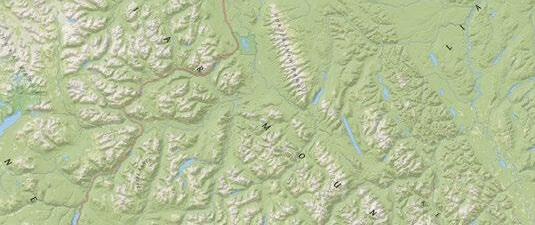
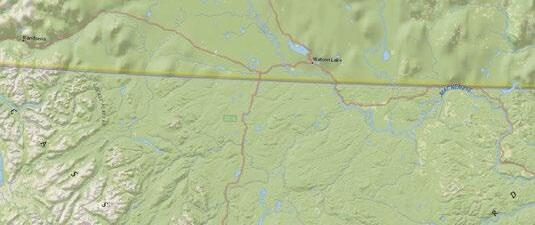
CALVING RUT
SPRING SUMMER WINTER
Woodland caribou seasonal movements from April 2019 –October 2021.
LEVEL – KAWDY CARIBOU MOVEMENTS AND LOCATIONS
OCTOBER 2020–OCTOBER 2021
TAHLTAN NATION TERRITORY

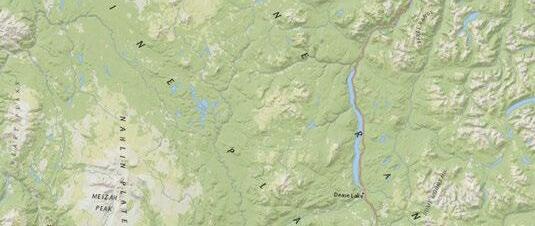

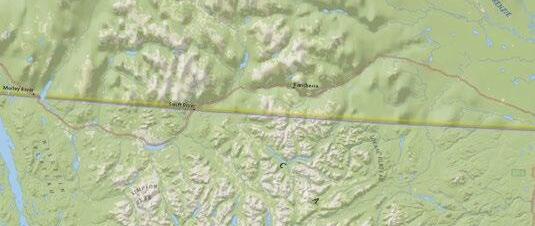
SEASON
CALVING
RUT
SPRING
SUMMER
WINTER
TCG has commenced their own caribou management program based on management concerns identified with Tahltan knowledge, guide outfitter knowledge, and local knowledge indicating changes in population numbers, decreased recruitment, and changes in seasonal ranges. It is believed the changing climate and increasing predator numbers are some of the primary causes for these changes.
TCG have identified the Tsenaglode, Edziza, Level Mountain-Kawdy Plateau, and Horseranch herds as priorities in 2020 initially, with the inclusion of Spatsizi in 2021. The herds are found in Tahltan spiritually and culturally important areas. One of the populations is declining, and two of the herds are in relatively heavily impacted areas from mineral development and licenced hunting and access.
The Tahltan Stewardship Initiative (TSI) is developing management direction, zoning, and conservation goals for the herds. Information is needed to create an updated understanding of the Woodland caribou herds and their relationship with wolves to support the advancement of Tahltan Indigenous Protected and Conserved Areas through the Tahltan land use planning process.
The Tahltan Wildlife Department has been monitoring the Level Mountain-Kawdy Plateau, Tsenaglode, Edziza, and Spatsizi Woodland caribou herds through seasonal surveys, GPS collars, and population surveys.
Since 2019, 10 collars have been deployed on the Tsenaglode herd, and in 2020 an additional 40 collars were deployed on the Tsenaglode and Level MountainKawdy Plateau herds with the initial seasonal range information below.
Seasonally, Level Mountain-Kawdy Plateau caribou have greater seasonal movements with caribou moving from alpine and subalpine habitats in the rut, to lower elevation forested winter habitats north and west of Level Mountain and Kawdy Plateau towards Teslin Lake, Swift River and Watson Lake to the north. Most of the caribou are located between Teslin Lake and Level Mountain in winter but a number still moved further north into the Yukon (Map 2). In the spring, caribou moved to alpine and subalpine habitats in and around Tuya Lake, Kawdy Plateau, and Snow Peak Range. Caribou stayed in these areas until late summer where most collared caribou moved to Level Mountain and Kawdy Plateau for the rut. Like the Tsenaglode herd, the seasonal movements indicate there is a great deal of mixing between caribou herds to the north (Swan Lake, Horseranch and Little Rancheria).
Additional information on the herds has been collected by aerial seasonal surveys. The surveys use the collared caribou data to locate the animals and the groups they are found with to record population demographics such as bulls, cows, and calves. Conducting surveys across seasons, provides estimates of survival rates, reproduction, population counts, and seasonal habitat use. Surveys have occurred for the Edziza, Tsenaglode, and Level-Kawdy herds since 2020, with the addition of Spatsizi herd in 2021. These will continue through the three years of the project.
Tahltan Nation has identified predator management as a wildlife management priority with a focus on greater management in and around community use areas and culturally important species such as moose and Woodland caribou. A predator management framework which includes management plans, policy development, traditional management practices, and monitoring has been developed by the Tahltan Central Government (TCG). A component of this framework is monitoring wolves and their movements, predation rates, and home ranges in and around community use areas, and where other monitoring programs are active such as the Tsenaglode, Edziza, Horseranch, Spatsizi, and Level Mountain-Kawdy Plateau Woodland caribou herds.
In year one (2020), the focus was on deploying 15 collars on wolves, monitoring movements and where feasible, predation sites, in relation to ongoing wildlife initiatives, along with collection and review of historic and current scientific, local and Tahltan knowledge. The planned engagement by the Guardians with Youth, Elders, and with local school programs to share information on the project and seek input for the second and third year of the project was delayed to 2021 due to COVID-19 restrictions.
Year two and three will include the continued monitoring of collared wolves with engagement and capacity development through on the land programs, field work, and community engagement by Guardians. Additional collars will be deployed depending on mortalities of collared animals.
Population monitoring to date has indicated the caribou herds have bull/cow ratio below 35 bulls/100 cows and the calf/cow ratio below 25 calves/100 cows. In addition, wolf density for the area is estimated at 13–24 wolves/1000 km², well above the wolf densities identified for recovering caribou populations (3 wolves / 1000 km² Environment Canada 2012) and stable caribou populations (6.5 wolves/1000 km² Hatter and Bergerud 1991, Hatter 2019). The mortality rate for the herds is approximately 20% based on the sample of collared caribou. Licensed harvesting is still being assessed but is estimated at 1.5–2% harvest (Hatter 2019) and it is known that Tahltan harvest is occurring on the herds.


All these factors, when combined with Tahltan, local, and scientific knowledge parameters, support the management concerns that the populations are possibly in decline or have negative population growth.
Since November 2020, 18 GPS collars have been deployed by Guardians and Wildlife Department on wolves with 3 collars being redeployed on new packs after mortalities (Map 3)
Average movement between locations is 2.3 km ± 4.4 km (90% CI) (N=3,793) and average home range size is 560 km2 ± 249 km² (90% CI) (N=18) which are like other northern boreal ecosystems. Wolf densities in northern boreal ecosystems are estimated with a range of 5–15 wolves/1000 km² in northwestern BC, 10-20 wolves/1000km² in Alaska, 9 wolves/1000 km² in Yukon ( Hatler et al. 2008, BC FLNRO 2014, TCG Tahltan Predator Management Plan in preparation). Pack sizes in the Yukon are estimated in the range 7–9 wolves in Yukon and ranges of 5-30 wolves in Alaska (Hatler et al. 2008).
Map 3 – Estimated wolf locations, movements, and pack home ranges from November 2020–October 2021.
Wolf densities in Tahltan Nation, based on a pack size range of 7–9 wolves associated with each collared wolf home range, results in a density estimate of 12–17 wolves/1000 km² (N=18). Wolf densities based on capture information, local knowledge and Tahltan knowledge through the Predator Management Plan and associated wolf trapping program have estimated pack size to range from 8–18 wolves with each collared wolf for the study area. Based on this range of pack size and the home range areas results in a density estimate of 13–24 wolves/1000 km² (N=10). Densities summarised by Hatler et al. (2008) indicate that wolf densities observed in Northern British Columbia have ranged from 10–44 wolves/1,000 km² (TCG Tahltan Predator Management Plan in preparation).
(3 wolves/1000 km² Environment Canada 2012) and stable caribou populations (6.5 wolves/1000 km² Hatter and Bergerud 1991, Hatter 2019).
Estimated wolf density estimates are higher than the provincial estimates and are higher than wolf densities identified for recovering caribou populations.
Outcomes include the following:
Capacity and training for Tahltan Guardians on wildlife management techniques and assessing information to support management strategies using Tahltan, local, and scientific knowledge;
Improved and current information collection, analysis, and strategies based on Tahltan, local, and scientific knowledge to support future management and research actions for wolves, caribou, and predator-prey ecosystems in Tahltan Territory;
Development of caribou conservation goals, management strategies, conservation areas, and climate change adaptation strategies through a community led Tahltan land use and candidate Indigenous Protected and Conserved Areas (IPCAs) process;
Refined and improved information on pack movements, distribution of packs, predation rates, prey sites, and home ranges for management of wolves in the Nation;

Refined and improved information will reduce the population and habitat information uncertainties, habitat use, movements, and seasonal range use information for management of Woodland caribou in the Nation;
Additional information on site specific habitat uses, and movement corridors to support management decisions considering ongoing industrial and human disturbances in caribou ranges in the Nation; and,
Assessment of long- and short-term climate change trends for the herds and bioclimatic region in relation to Tahltan knowledge of the caribou herds in the Nation.

September 3, 2021
Ministry of Forests, Lands, Natural Resource Operations and Rural Development Tahltan Central GovernmentJOINT NEWS RELEASE

VICTORIA – There will be an increased presence of Tahltan guardians and B.C. Conservation Officers within Tahltan Territory this year, as the Province of British Columbia and the Tahltan Central Government work together towards cooperative wildlife stewardship and continue their shared commitments to further reconciliation.
These joint efforts are to respect and support the Tahltan Nation’s ongoing work to improve wildlife populations, food security and community safety while ensuring hunting access for licensed hunters visiting Tahltan Territory this upcoming hunting season.
“Wildlife and wildlife management is critically important to the Tahltan way of life” said Katrine Conroy, Minister of Forests, Lands, Natural Resource Operations and Rural Development. “The BC and Tahltan governments are committed to working together on wildlife management for the benefit of the Tahltan and all British Columbians. This is part of the reconciliation path that we all walk together in support of prosperity for future generations.”
The Tahltan guardians will be working together with B.C. Conservation Officers to coordinate efforts and conduct joint patrols throughout the hunting season. The Tahltan Central Government and the Province of British Columbia are collaborating on this work to ensure that Tahltan and licensed hunters can enjoy access to sustainable hunting opportunities in the region.
“From birth, Tahltans are taught of their responsibility to steward our land,” said Chad Day, President of the Tahltan Central Government. “The Tahltan Central Government will continue working with the Province to improve wildlife management in Tahltan Territory grounded in the principles of respect and recognition of Tahltan rights and title. The Tahltan Nation is committed to building a world class wildlife management regime to help ensure there are plentiful wildlife populations that are properly managed using Tahltan knowledge and modern day science. I am proud of our accomplishments and excited for what the future holds as we work to evolve and strengthen our relationship with the Province of British Columbia.”
Safety within the Tahltan Territory is of high concern going into the 2021 hunting season. After a contentious hunting season last year, both governments hope that a unified approach which is respectful of Tahltan traditional and cultural practices on the land will support a better experience for all hunters in the region, including visitors and Tahltan members as they exercise their constitutionally protected Aboriginal hunting rights.
Learn More:
Current Provincial Hunting Regulations & Restrictions: www2.gov.bc.ca/gov/content/sports-culture/ recreation/fishing-hunting/hunting
